Forums
- Forums
- Duggy's Reference Hangar
- USAAF / USN Library
- F2H BANSHEE
F2H BANSHEE
Post a reply
- Go to Previous topic
- Go to Next topic
- Go to Welcome
- Go to Introduce Yourself
- Go to General Discussion
- Go to Screenshots, Images and Videos
- Go to Off topic
- Go to Works in Progress
- Go to Skinning Tips / Tutorials
- Go to Skin Requests
- Go to IJAAF Library
- Go to Luftwaffe Library
- Go to RAF Library
- Go to USAAF / USN Library
- Go to Misc Library
- Go to The Ops Room
- Go to Made in Germany
- Go to Campaigns and Missions
- Go to Works in Progress
- Go to Juri's Air-Raid Shelter
- Go to Campaigns and Missions
- Go to Works in Progress
- Go to Skinpacks
- Go to External Projects Discussion
- Go to Books & Resources
-
8 years agoSat Jul 29 2023, 09:45amDuggy
 Main AdminEven before the FH-1 Phantom went into production, McDonnell had been considering a "bigger and better" Phantom for the Navy, with higher performance and more range. In March 1945, only weeks after the first flight of the Phantom, the Navy ordered a single prototype of the improved machine as the "XF2D-1".
Main AdminEven before the FH-1 Phantom went into production, McDonnell had been considering a "bigger and better" Phantom for the Navy, with higher performance and more range. In March 1945, only weeks after the first flight of the Phantom, the Navy ordered a single prototype of the improved machine as the "XF2D-1".
The new machine had an unmistakeable resemblance to the Phantom, with very much the same overall configuration including similar folding wing, tail, engine, and landing gear arrangement. However, the XF2D-1 was not merely scaled up in all regards; it was an entirely new aircraft with little or no parts commonality with the Phantom, and many detail differences.
Armament was heavier, with four M3 Hispano-type 20 millimeter cannon under the nose, the position of the guns having been relocated because the muzzle flash of the Phantom's top-mounted Brownings tended to blind the pilot during night firing. The cannon had an ammunition load of 150 rounds per gun. The main gear retracted outward into the wing, not inward; the air brakes were changed from a solid to a perforated format; and the nose gear could fold down on the ground to put the aircraft into a "kneeling" configuration, with two little wheels extended to support the aircraft's nose -- the idea being that this would make servicing simpler and allow tighter packing of aircraft parked on a carrier deck. The canopy was streamlined and updated, though it still slid back to open, and the pilot sat on an ejection seat -- designed and built by McDonnell but similar to early-mark British Martin-Baker ejection seats, with ejection handles above and behind the headrest.
Of course, the larger XF2D-1 needed more power than the Phantom, and so the XF2D-1 was fitted with twin Westinghouse J34-WE-22 engines, with 13.3 kN (1,360 kgp / 3,000 lbf) thrust each -- almost twice the power of the Phantom's J-30s. Internal fuel supply was 3,320 liters (877 US gallons).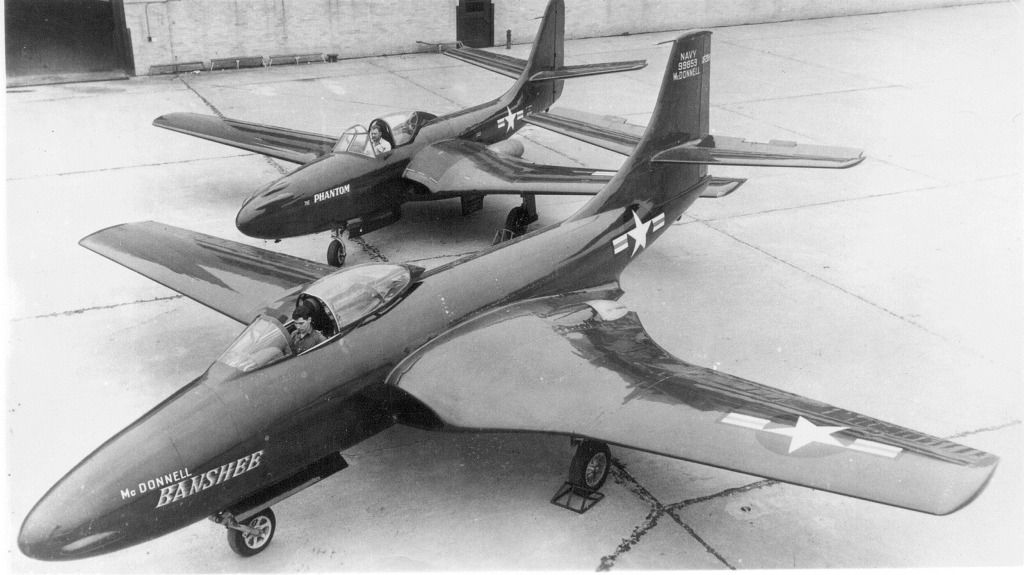
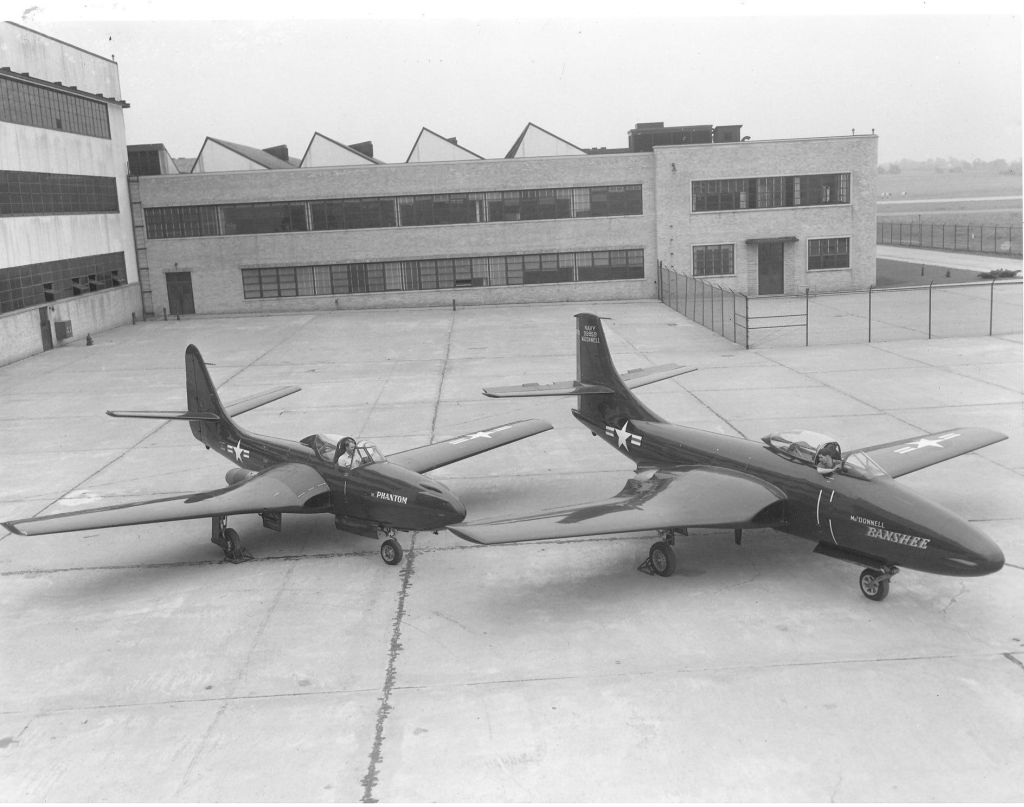
The initial flight of the XF2D-1 was from Saint Louis on 11 January 1947, with test pilot Robert Edholm at the controls. Trials proved satisfactory, and so the Navy ordered 56 production machines as the "F2H-1 Banshee" in May 1947, with the first rolled out in August 1948. The F2H-1 differed from the XF2D-1 in various details, such as a shallower tailfin fillet and a flat tailplane, instead of the dihedral tailplane of the XF2D-1. Following carrier qualification on the USS FRANKLIN D. ROOSEVELT, the Banshee went into service late in 1948, replacing the FH-1 in squadron service. It was nicknamed the "Banjo".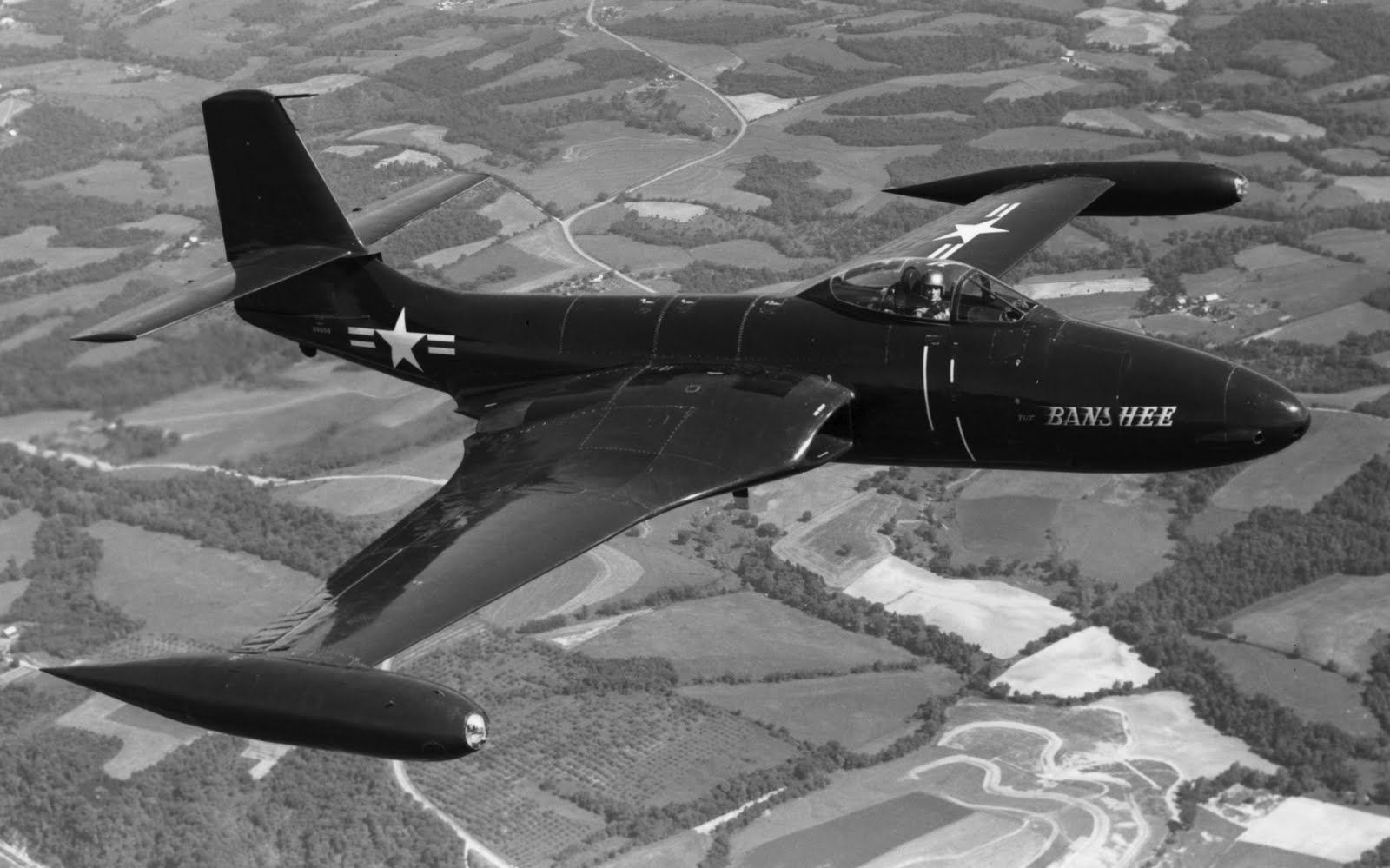
The F2H-1s remained in firstline service long enough to be upgraded from the J34-WE-22 engines they had been built with to uprated J34-WE-30 engines, providing 14.0 kN (1,430 kgp / 3,150 lbf) thrust each. However, it was obvious that further improvements could be made to the Banshee and the F2H-1 was strictly an interim type, more or less a training exercise for pilots and carrier crew, with the Navy ordering the improved "F2H-2" in August 1948.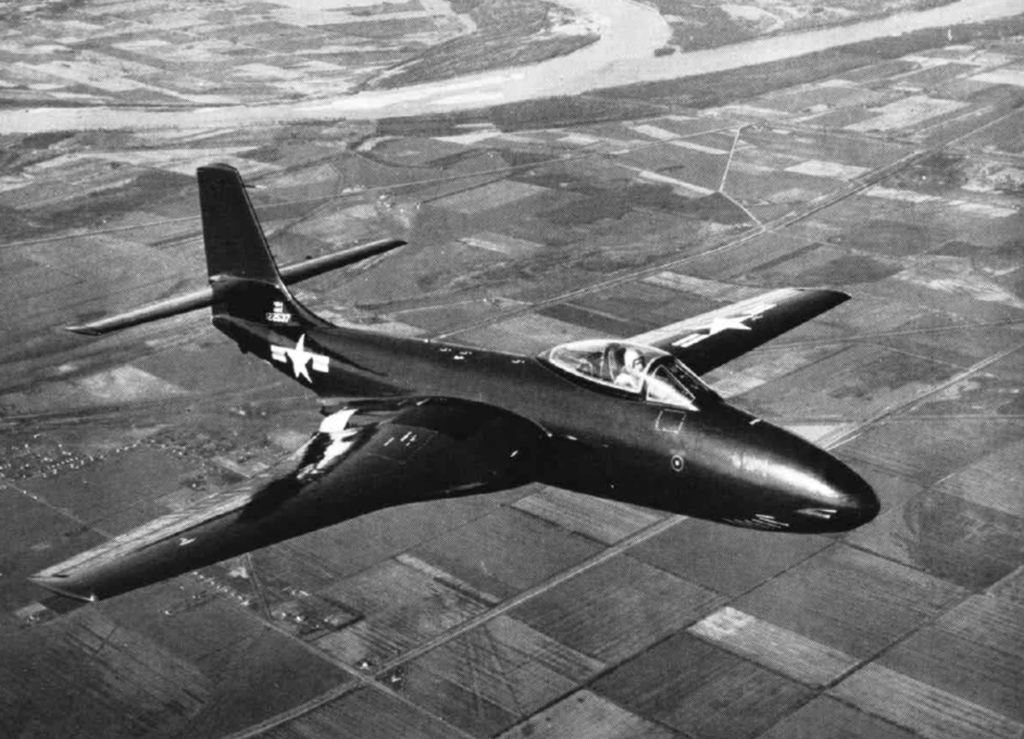
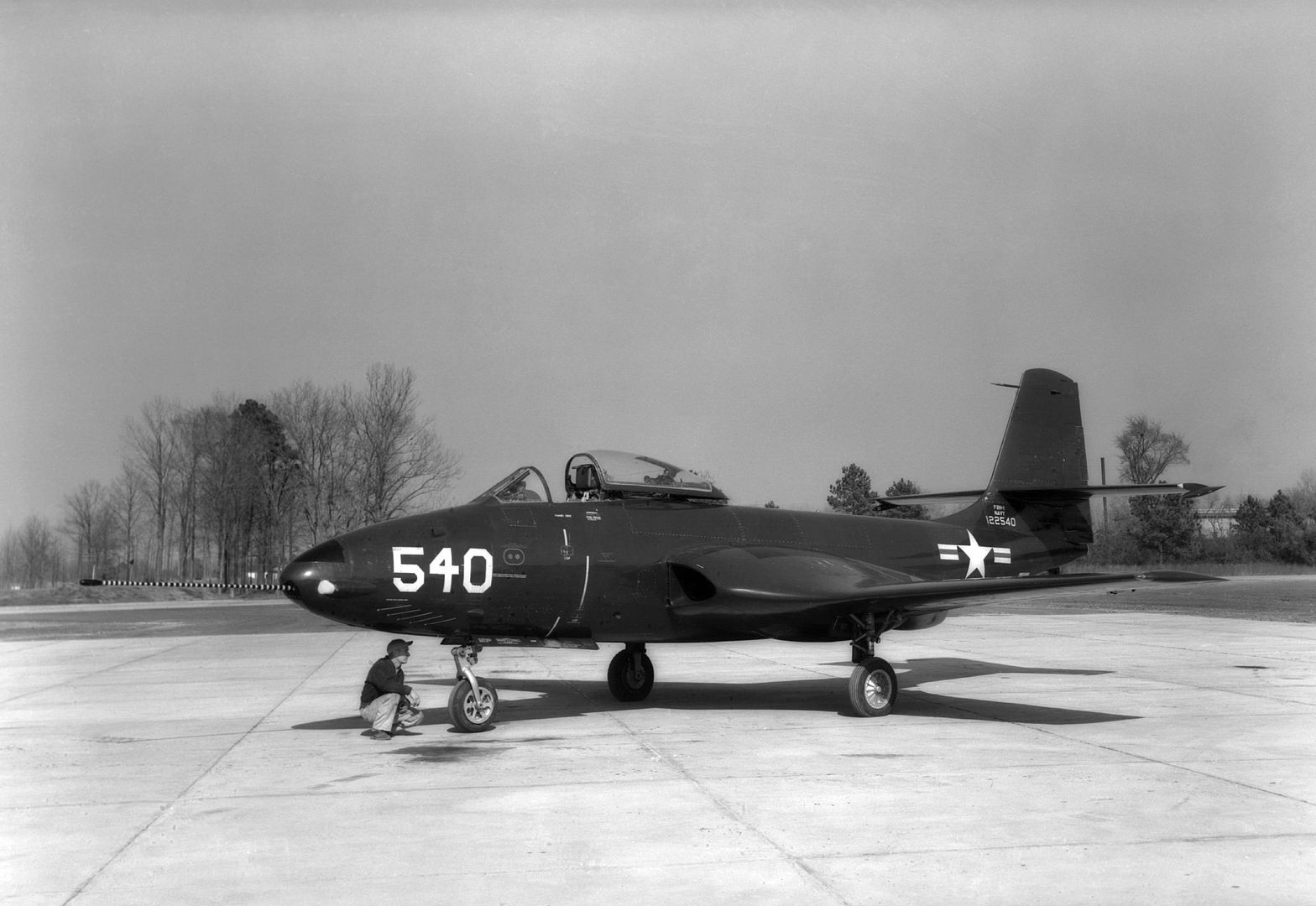
The F2H-2's appearance was generally much the same as that of the F2H-1, but the F2H-2 was stretched by 36 centimeters (14 inches) to increase fuel capacity by 670 liters (177 US gallons). A tank with a capacity of 757 liters (200 US gallons) was attached to each wingtip. The tip tanks were fixed and could not be dropped; they could be removed by the deck crew, but it is hard to find any pictures of operational F2H-2s without the tip tanks. These changes brought the total fuel capacity of the F2H-2 up to 5,510 liters (1,454 US gallons). To handle the greater weight, the wing was structurally reinforced and extended slightly in span. The engines were also changed to further uprated J34-WE-34 engines with 14.4 kN (1,475 kgp / 3,250 lbf) thrust each.
The "kneeling" nose landing gear scheme was deleted, since it hadn't proven particularly useful in practice. While the F2H-1 had no provision for external stores, the F2H-2 featured two stores pylons inboard under each wing, for a total of four, with a typical warload being four 112 kilogram (250 pound) bombs or two 225 kilogram (500 pound) bombs. Alternatively, three stores pylons could be fitted outboard under each wing to carry a total of six HVARs.
* Initial deliveries of the F2H-2 were in 1949. A total of 364 was produced, making the F2H-2 the most heavily built version of the Banshee. A number of subvariants were built as well. The "F2H-2B" was an attack-optimized subvariant with stronger wings, allowing it to carry up to 1,360 kilograms (3,000 pounds) of external ordnance. It had no visible external differences relative to the standard F2H-2. Only 27 F2H-2Bs were built; they were often tasked with the nuclear strike mission, carrying a single Mark 7 or Mark 8 nuclear weapon.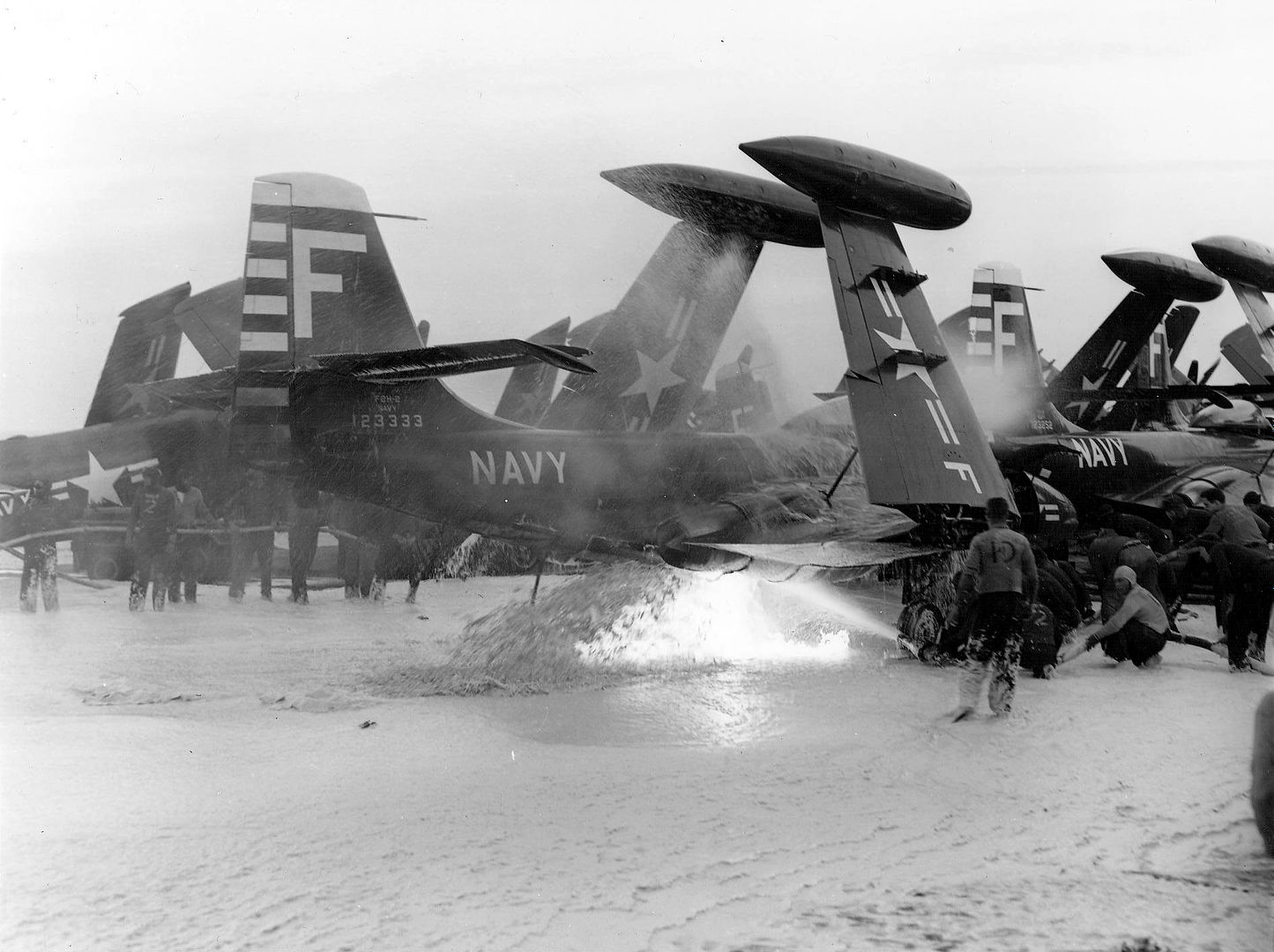
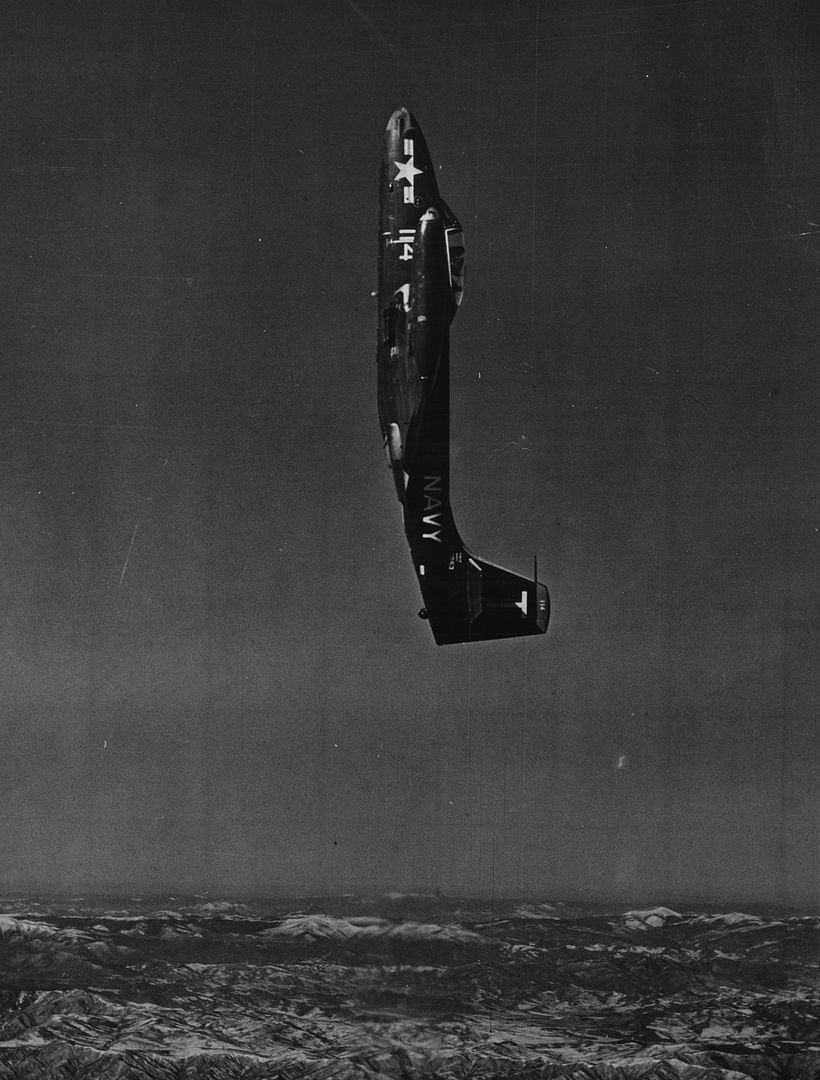
_Flying_over_Wonsan_North_Korea_with_Wonsan_airfield_immediately_below._Photograph_is_dated_20_October_1952.jpg?width=1920&height=1080&fit=bounds)


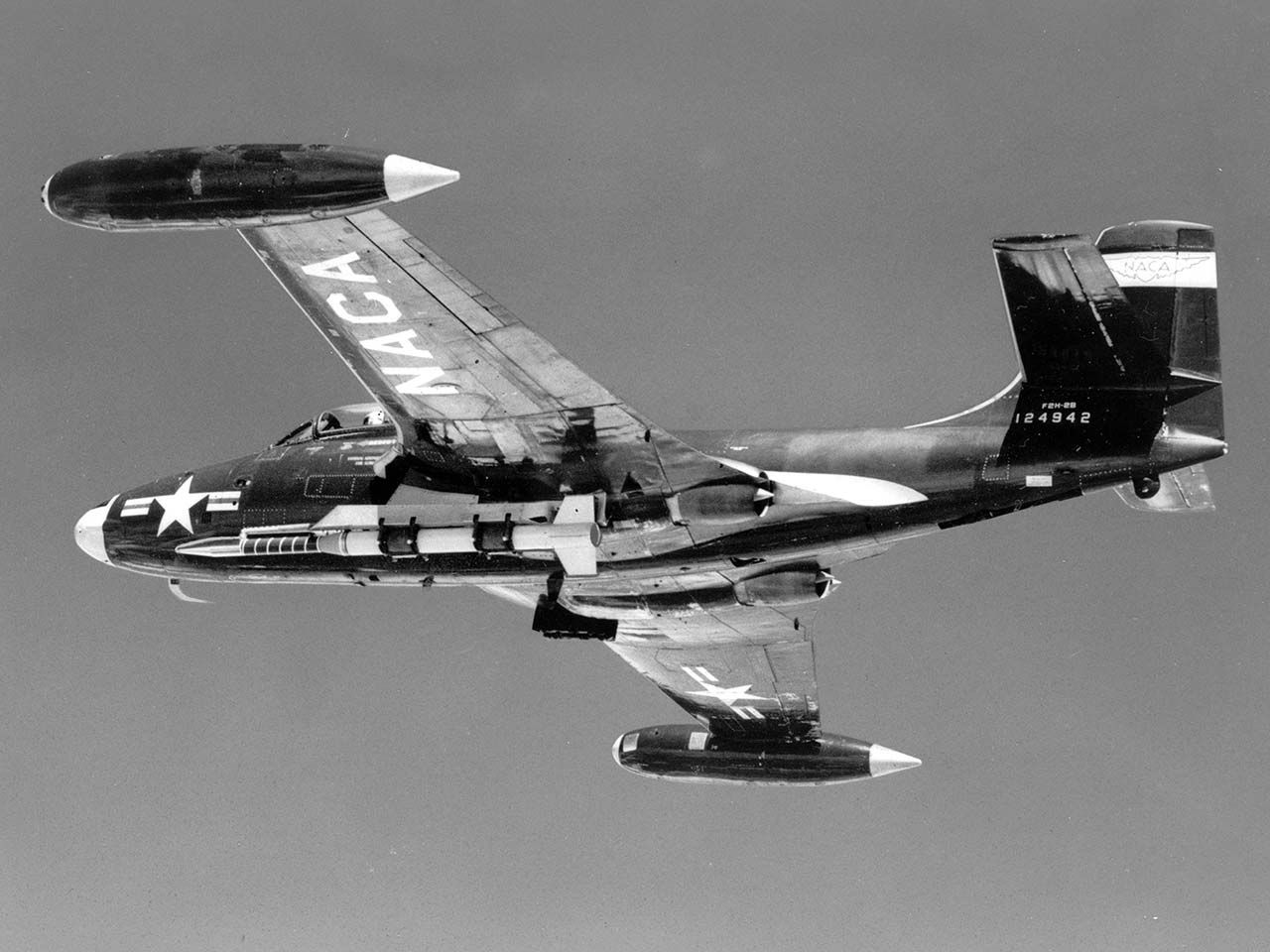
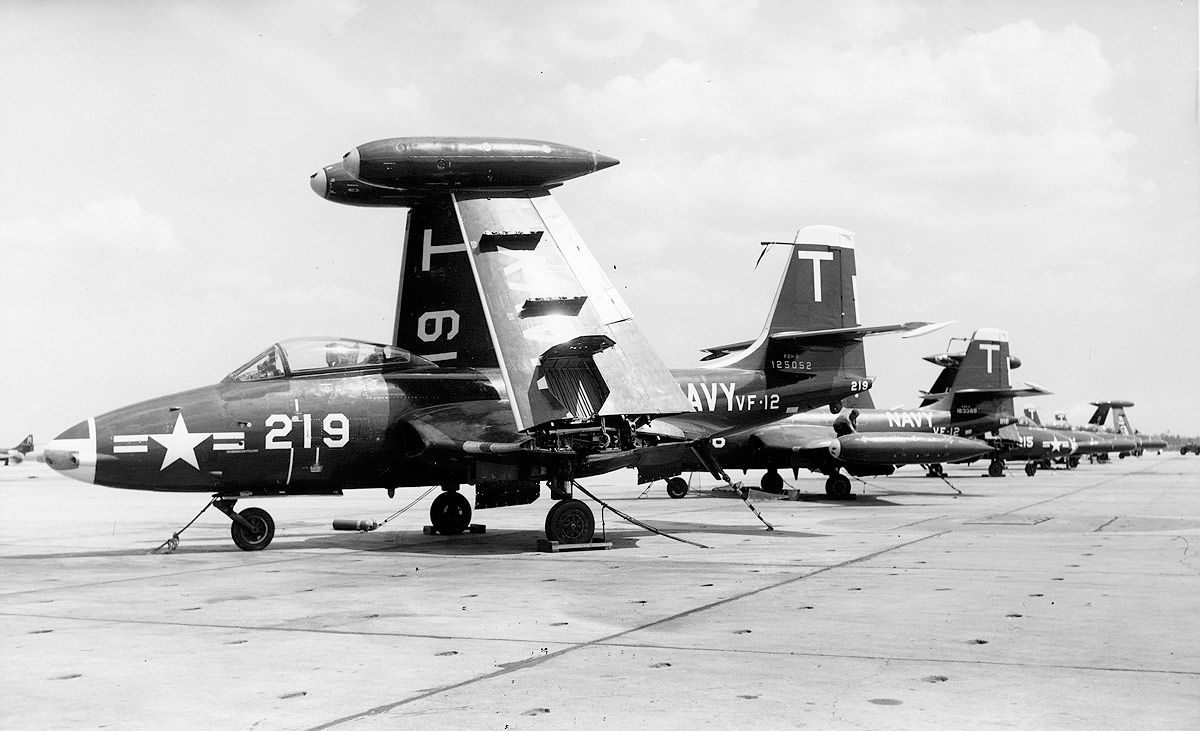

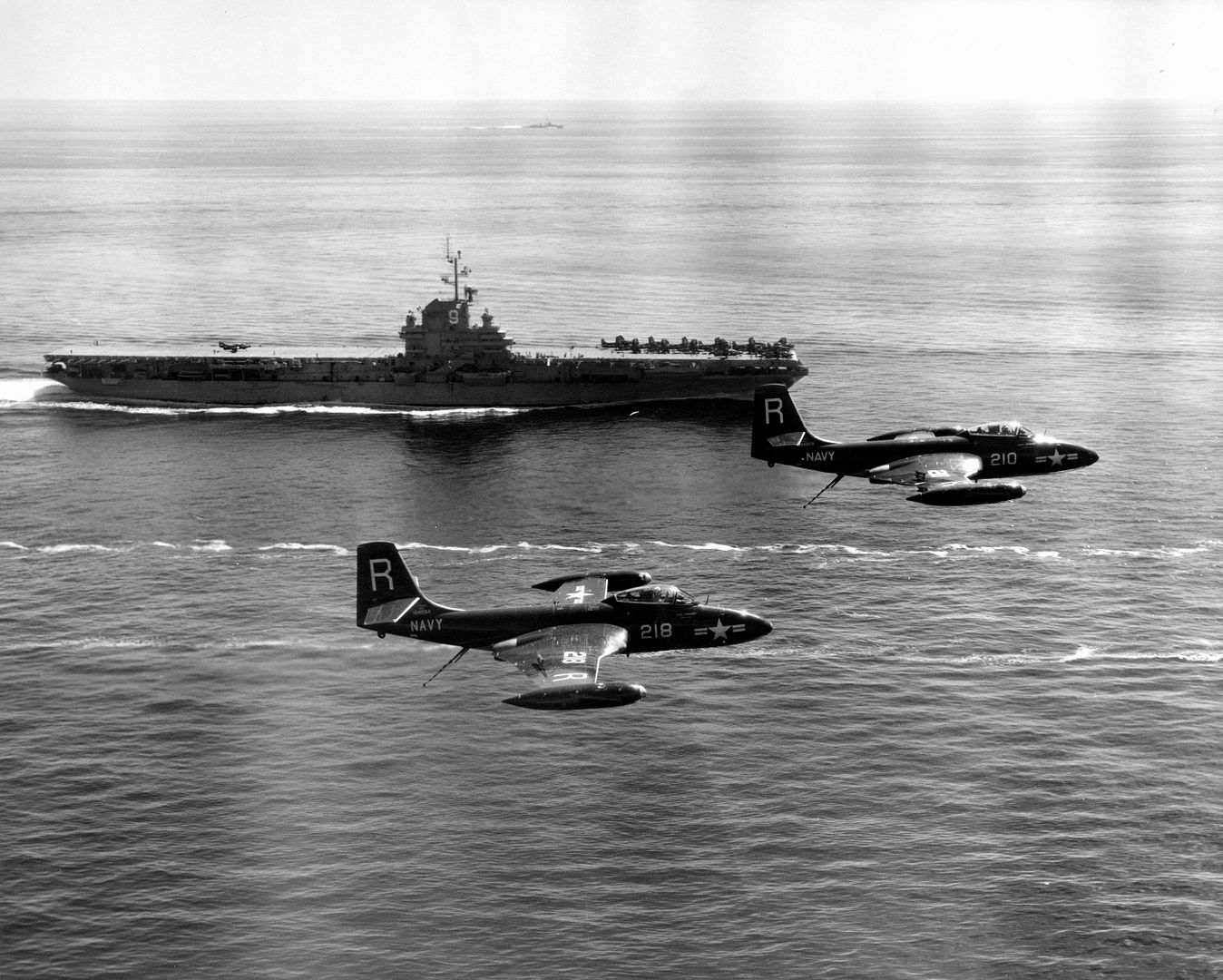

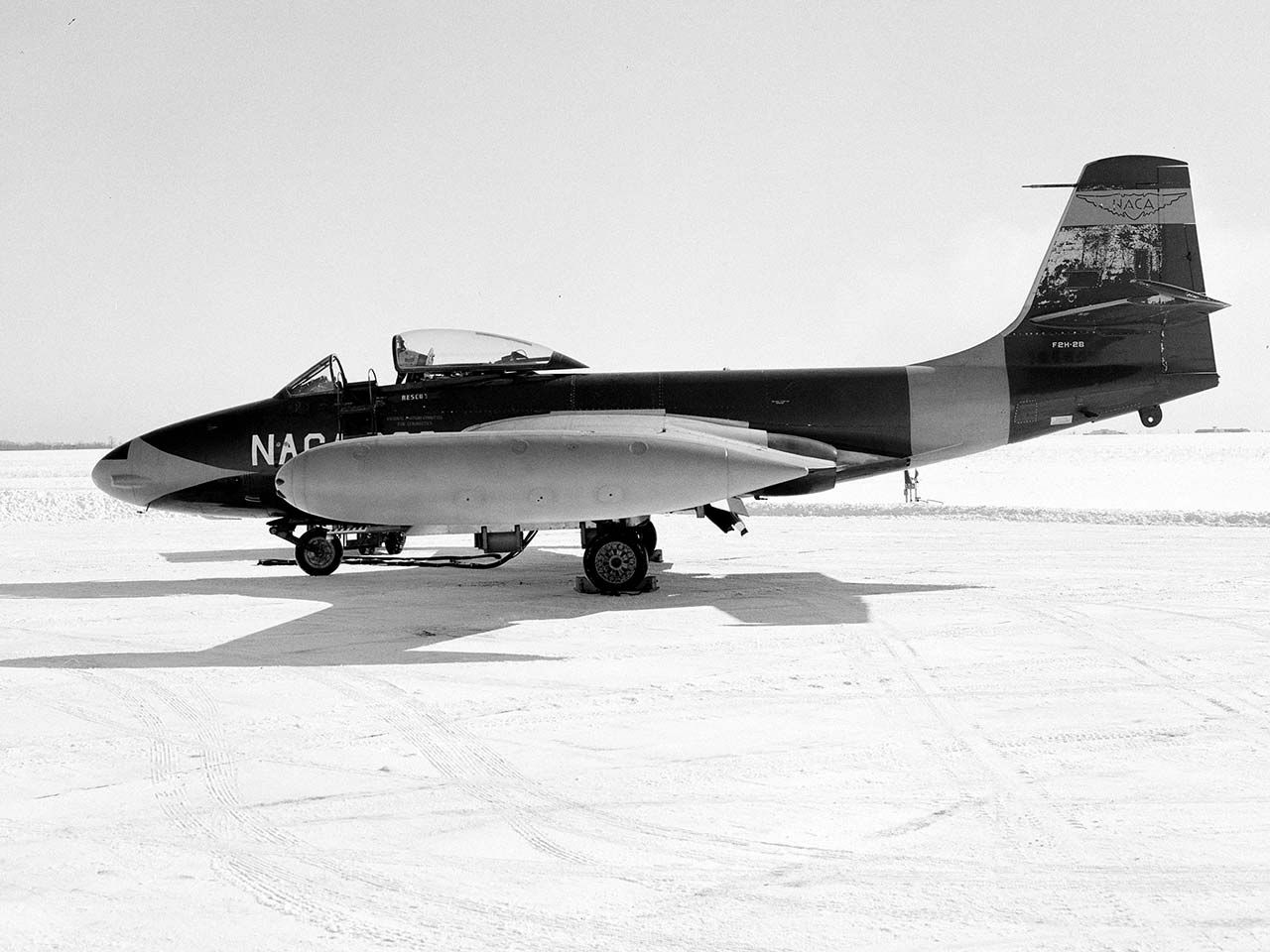

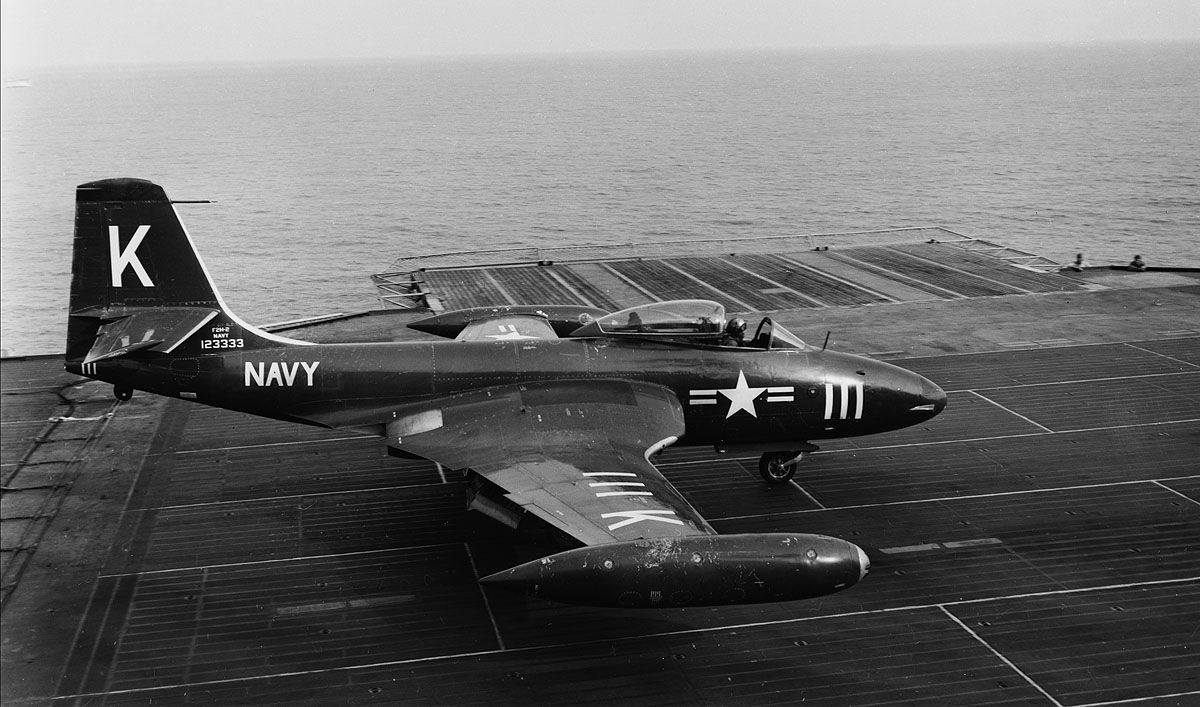
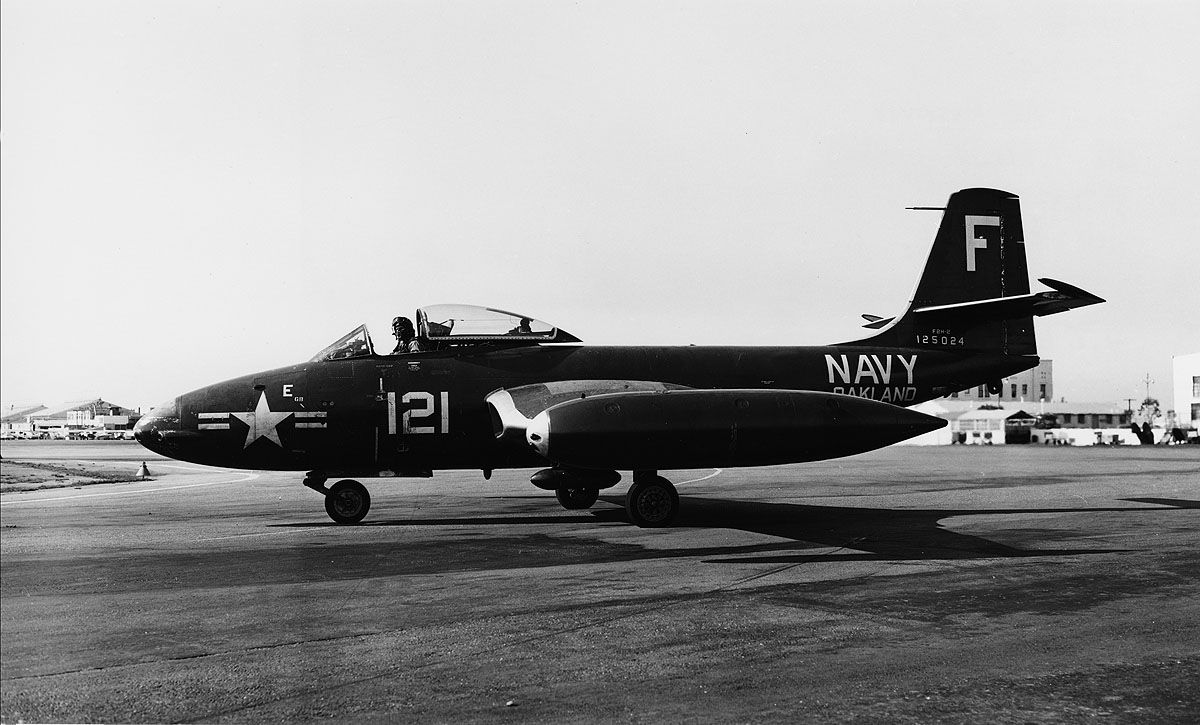

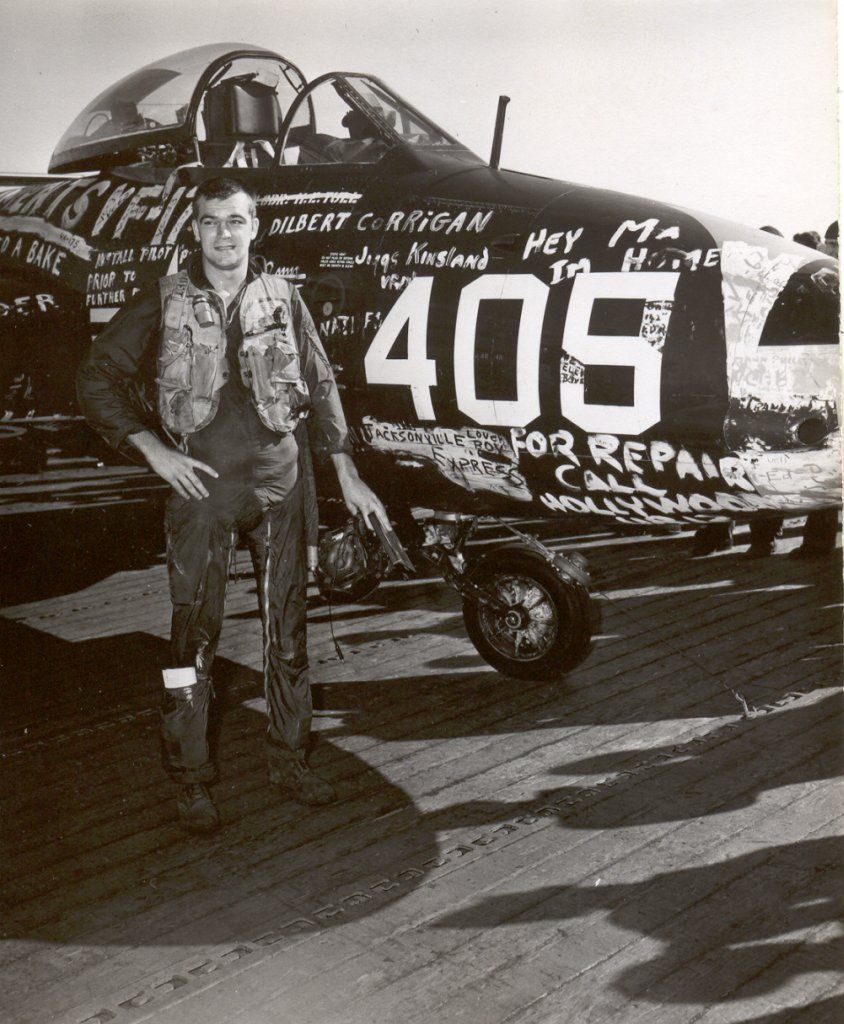
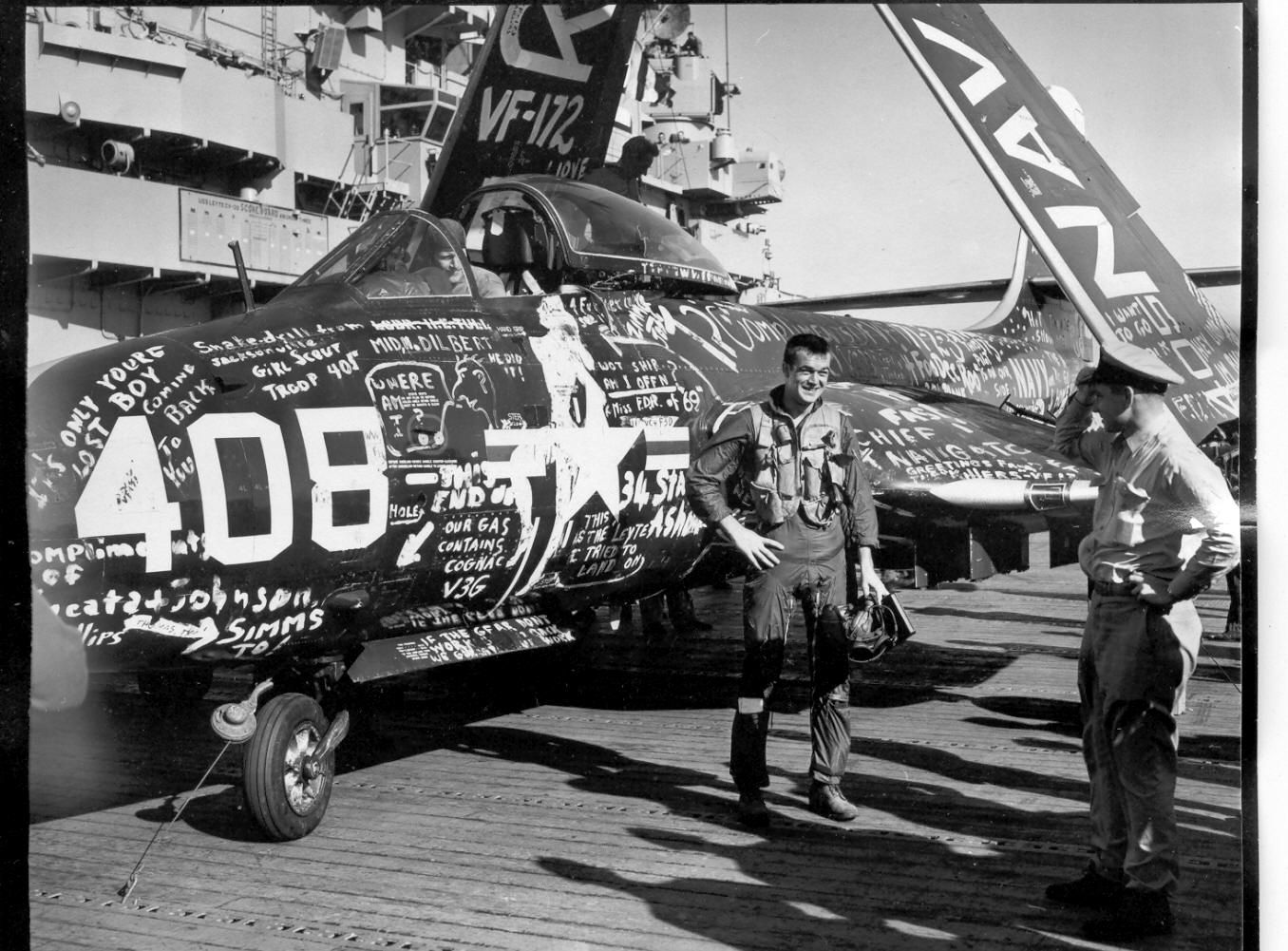
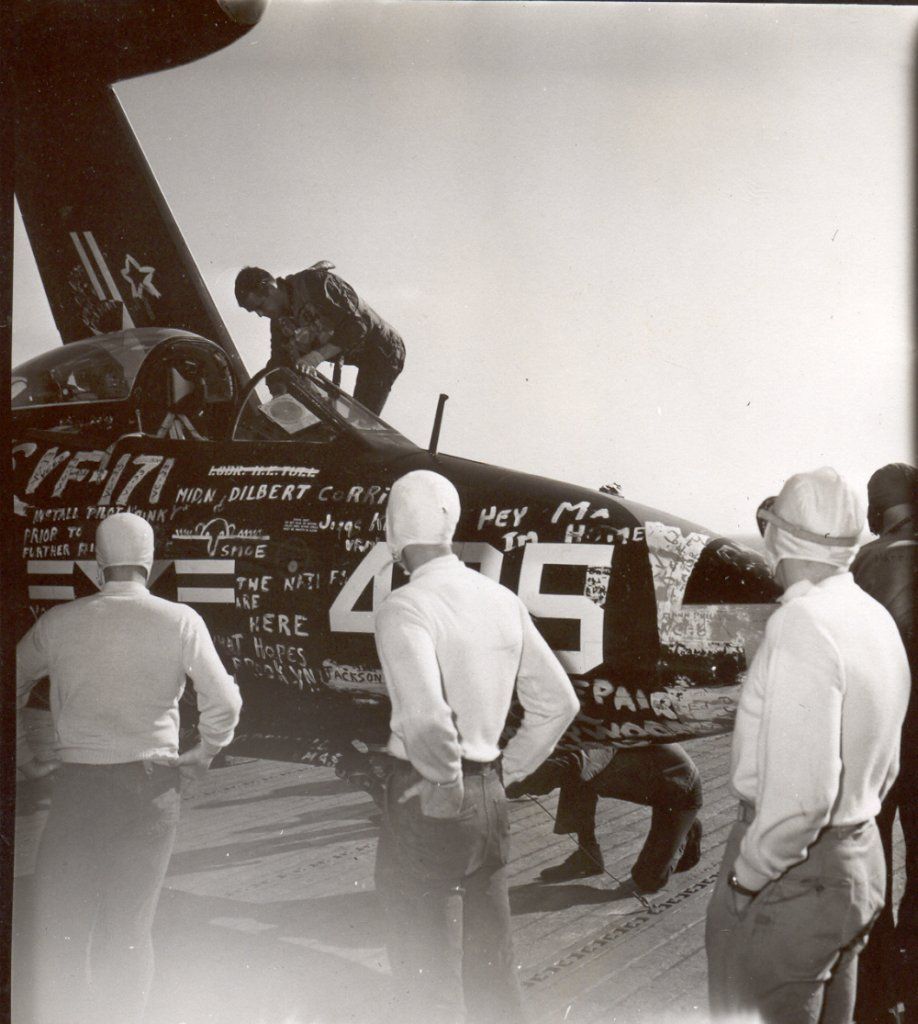
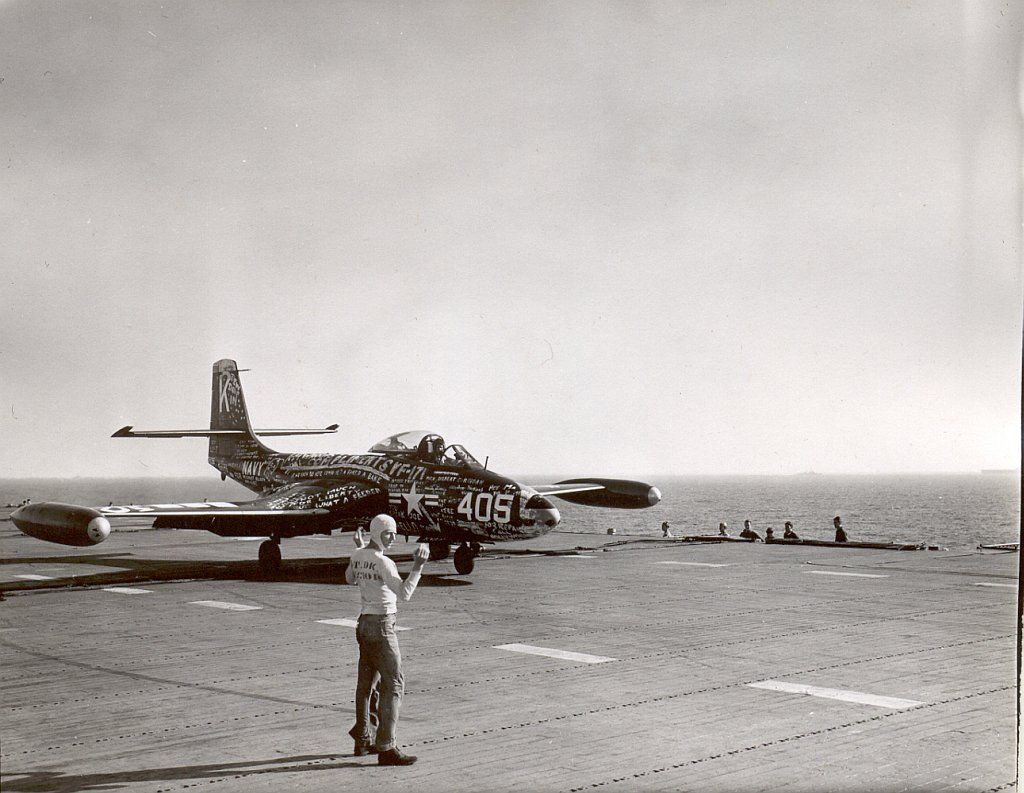
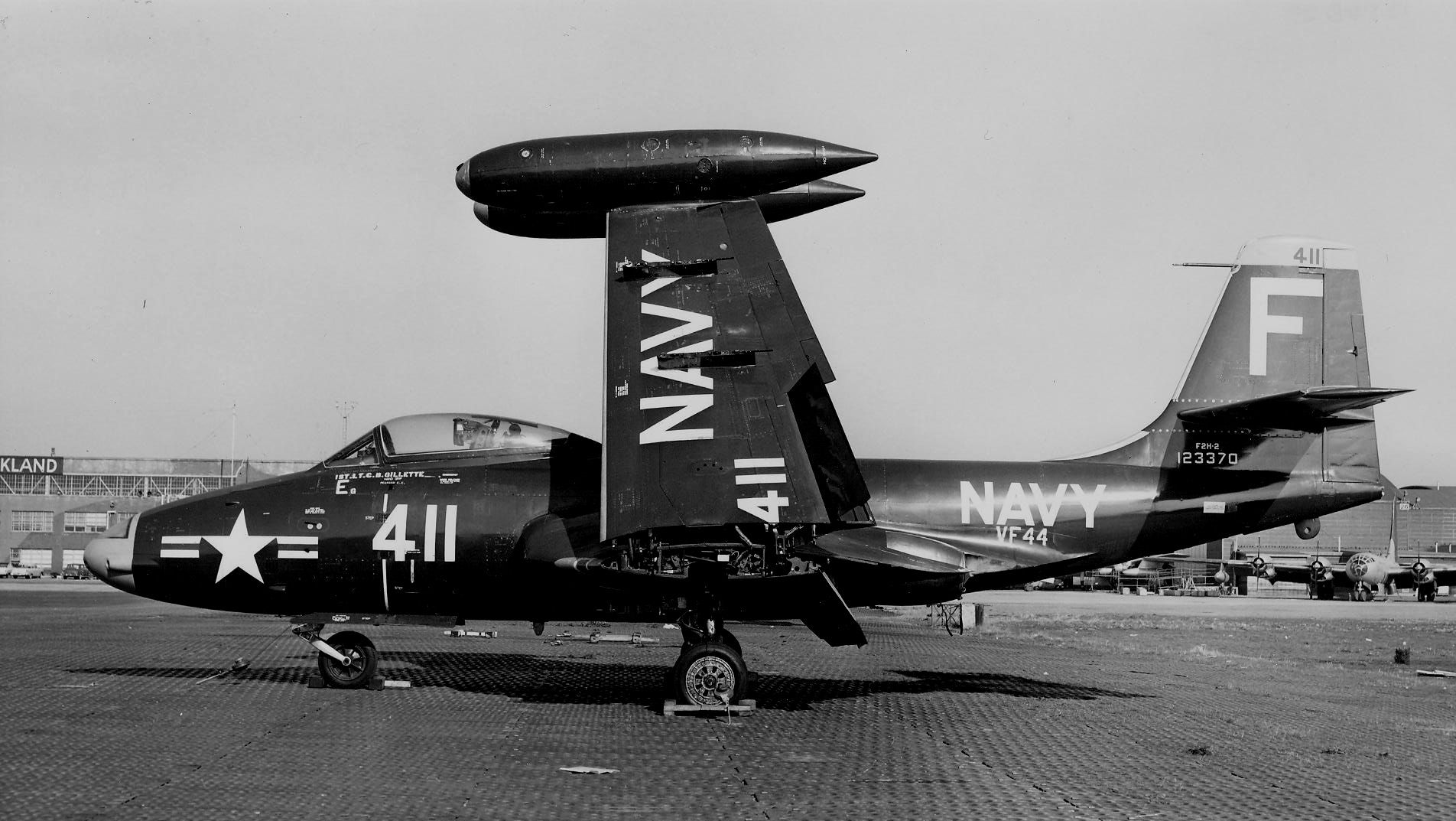
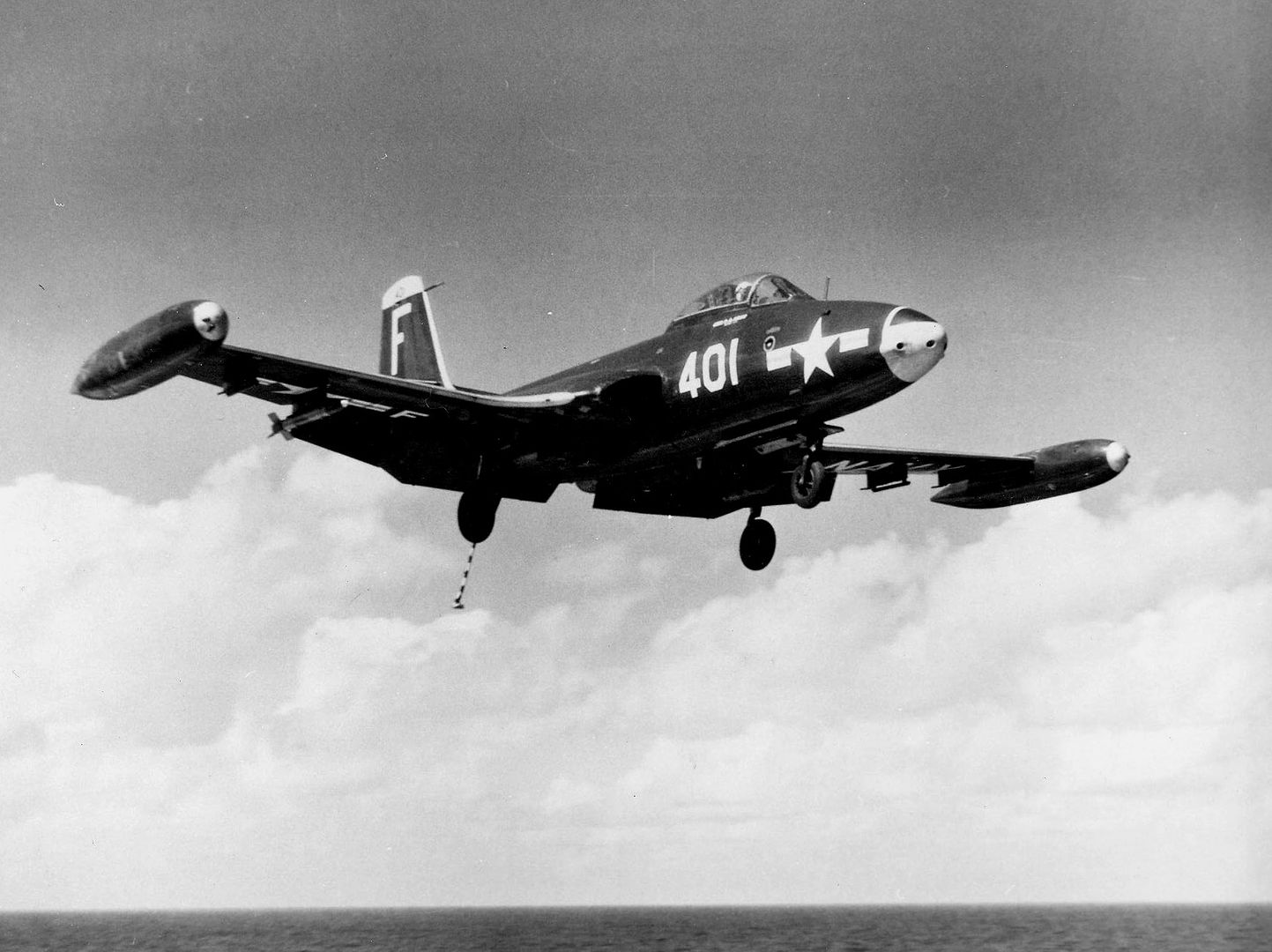
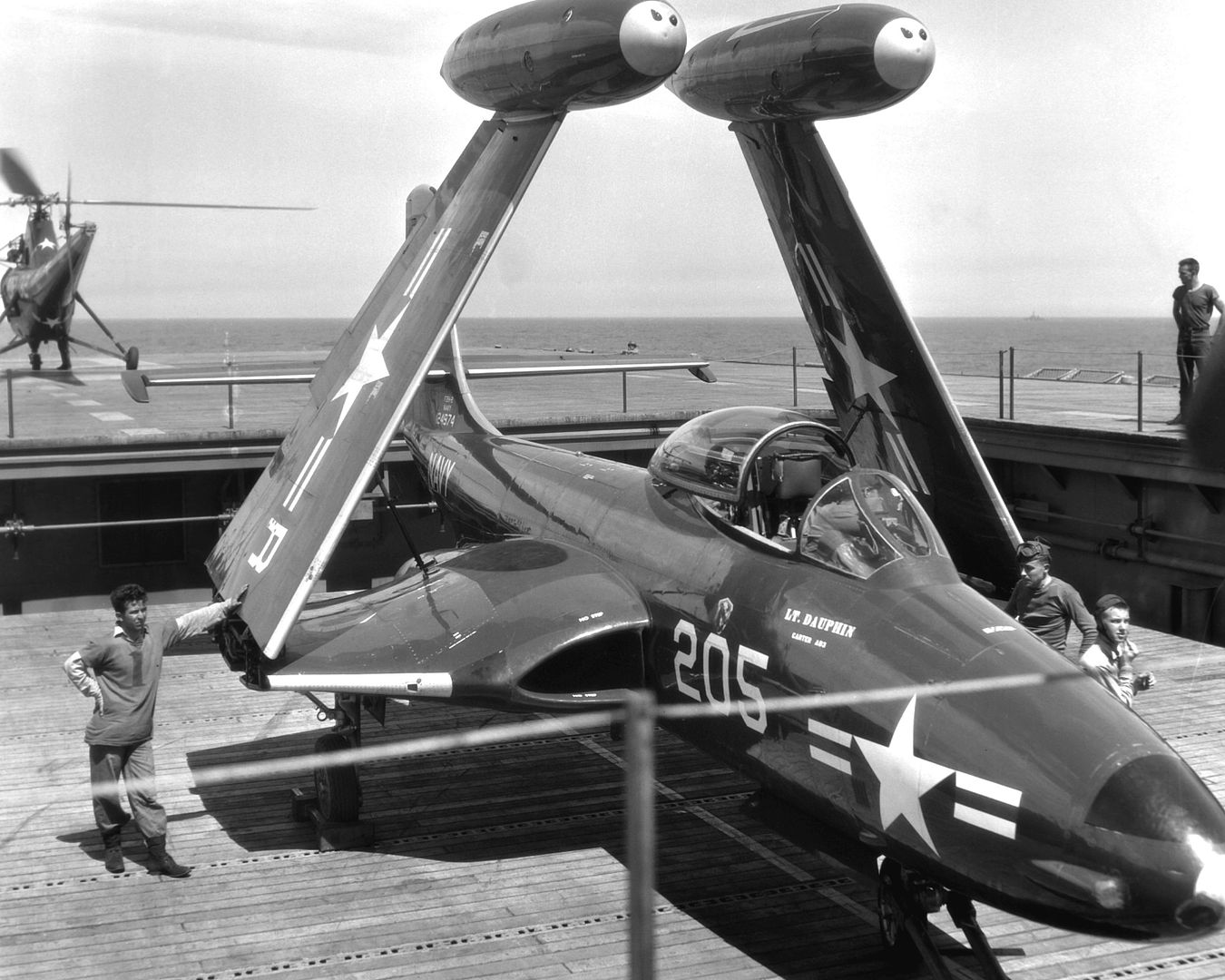
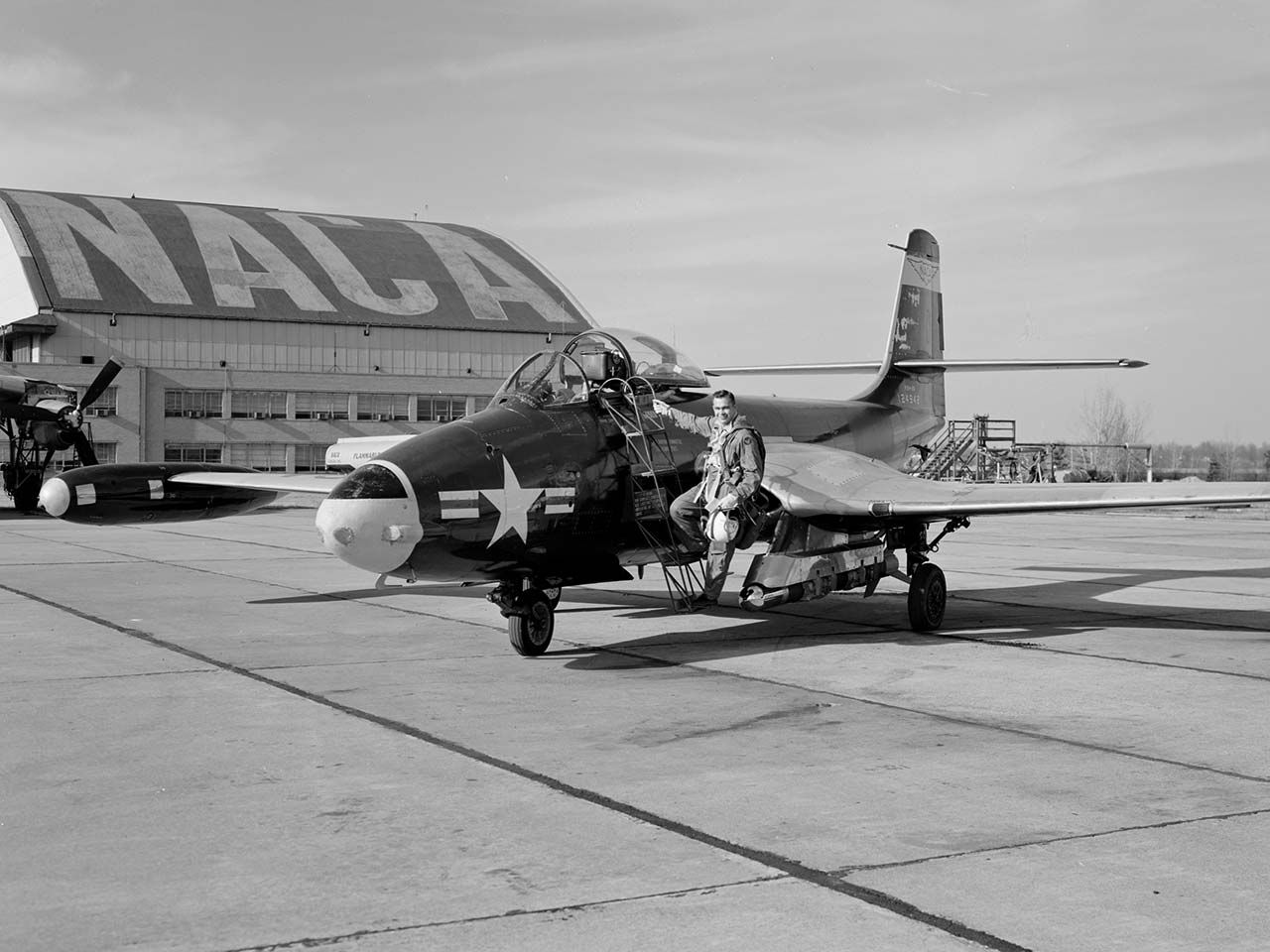
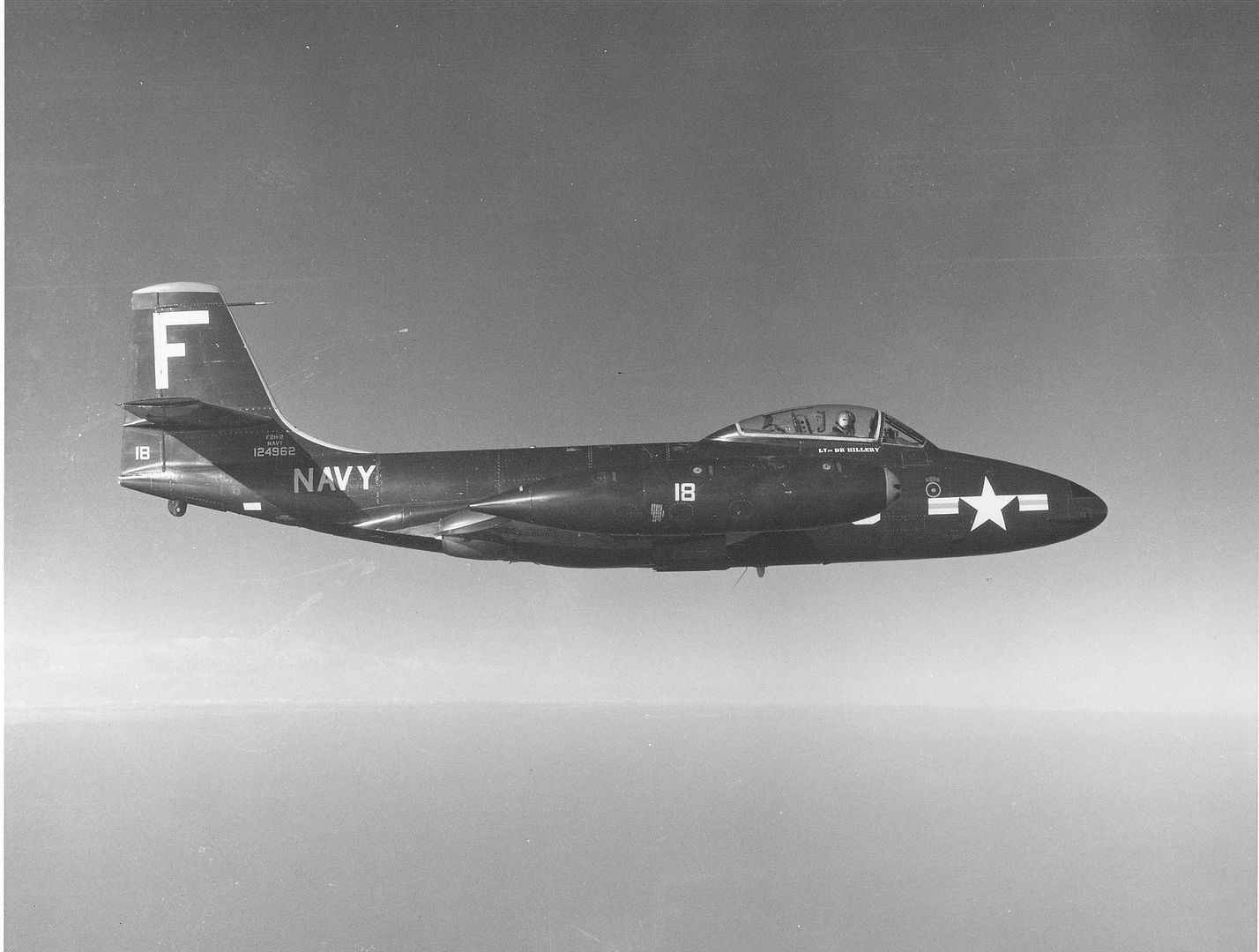
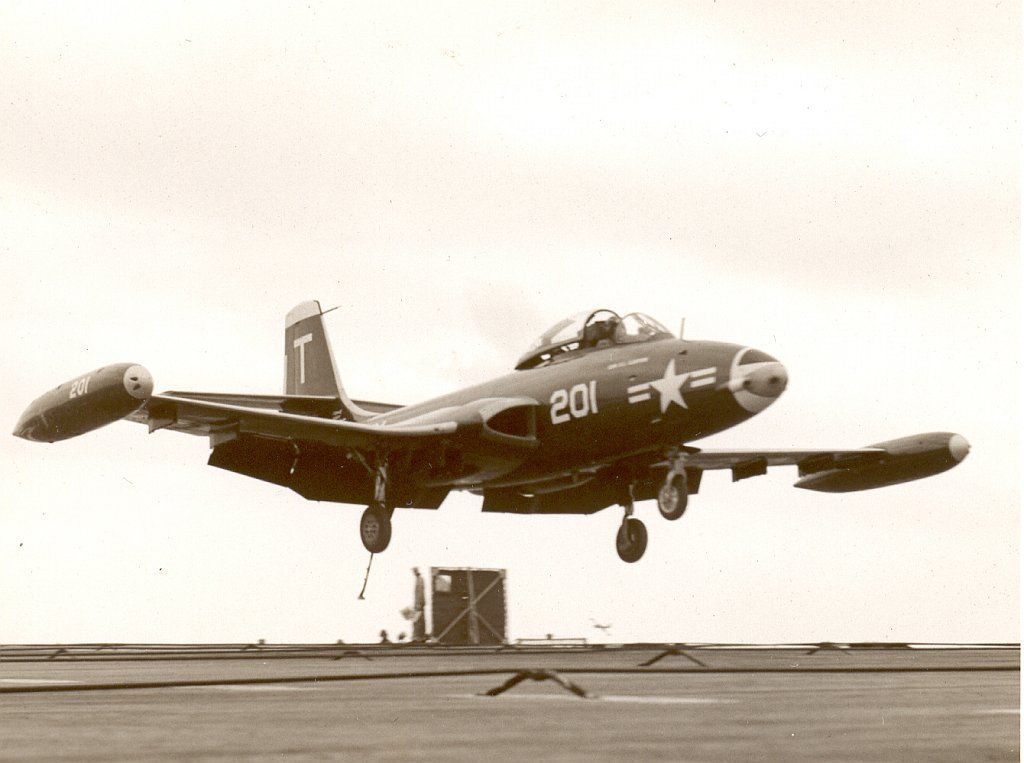


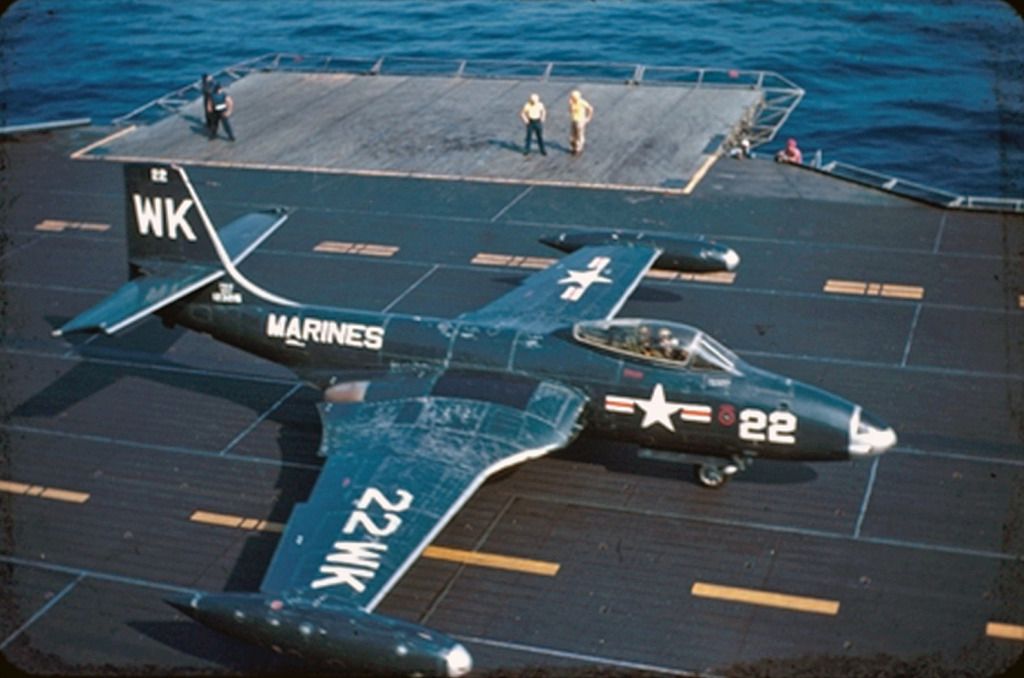
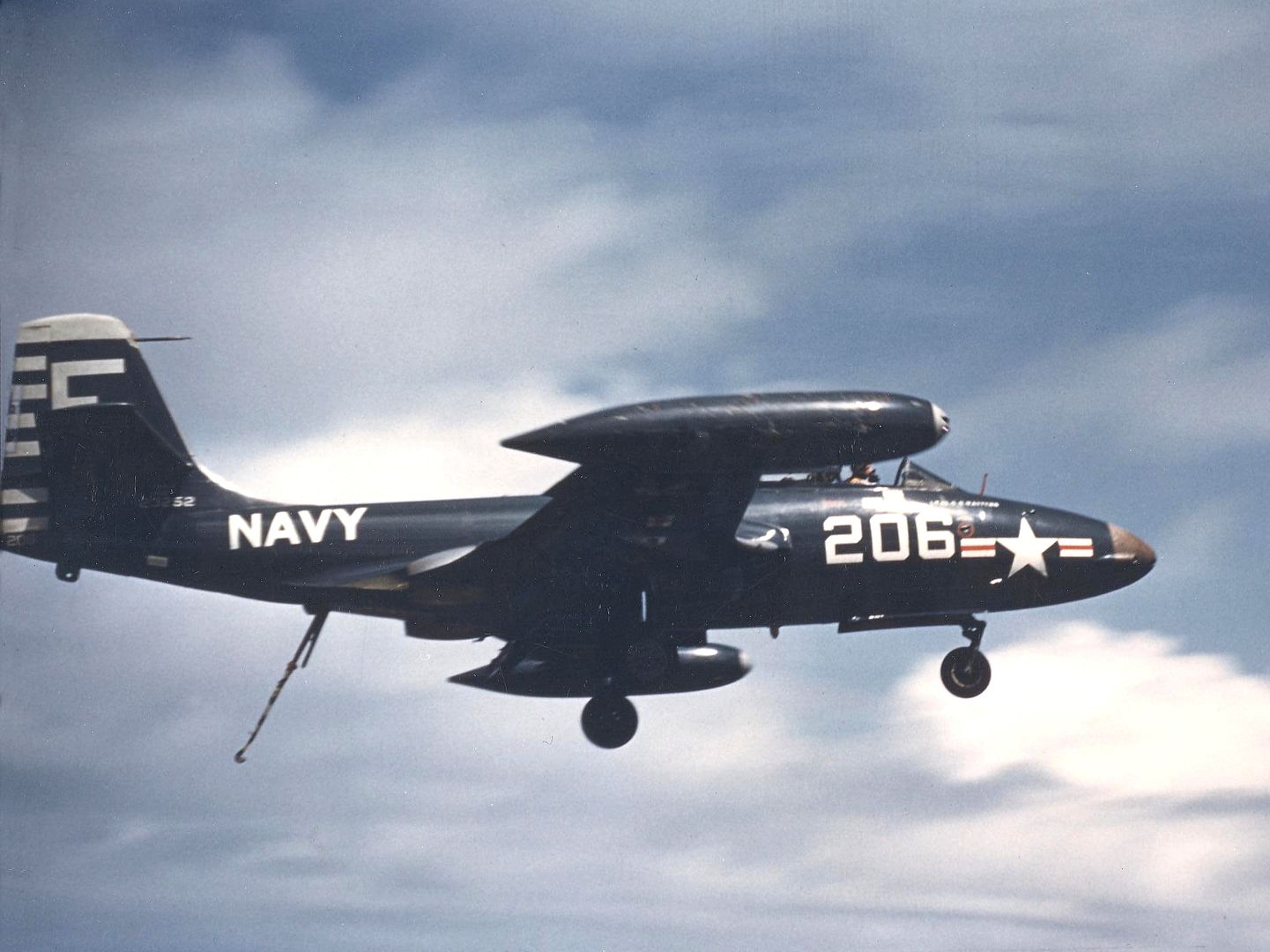
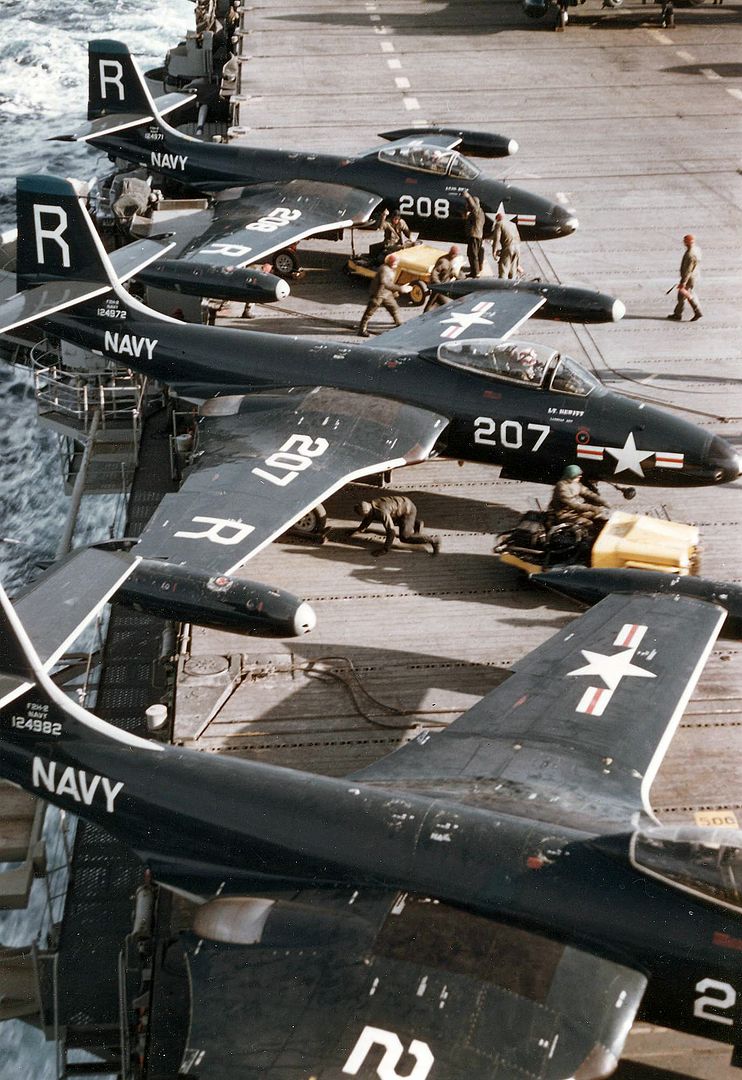
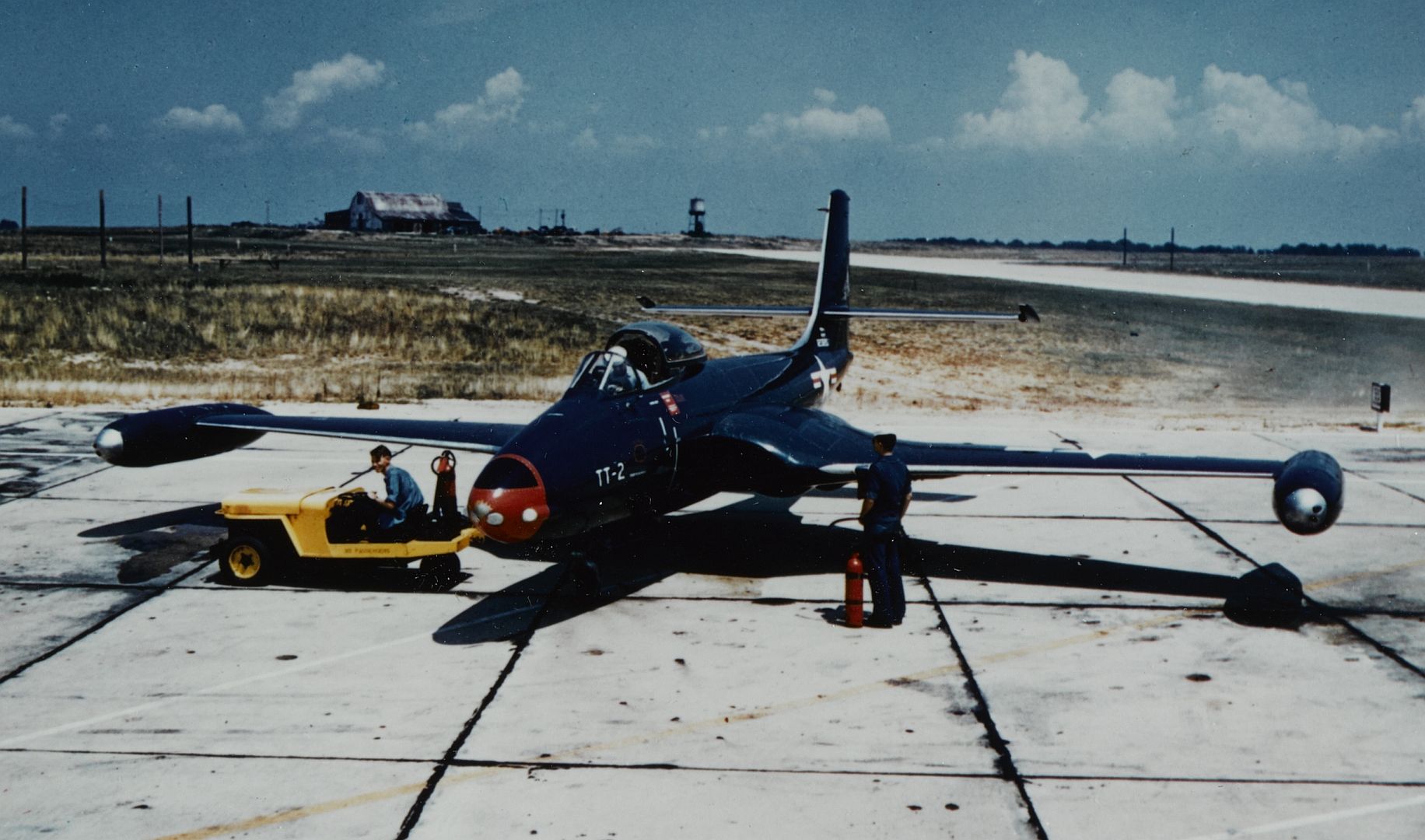
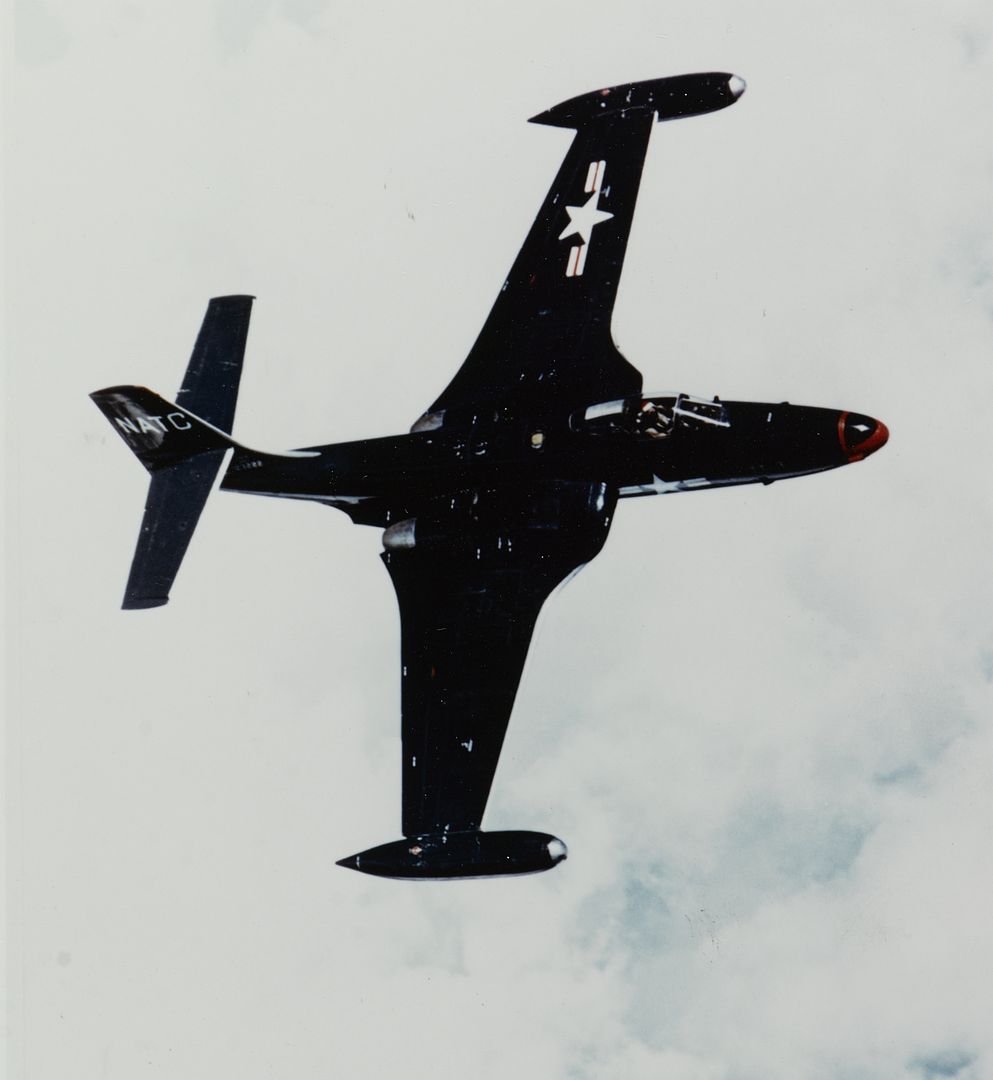
The "F2H-2N" was a night / all-weather fighter, with the nose stretched by 85 centimeters (34 inches) to accommodate an AN/APS-19 radar. The four-cannon armament was retained, but rearranged so that two cannon fired from each side of the nose. Only 14 were built, with work moving on to more sophisticated all-weather fighter derivative concepts.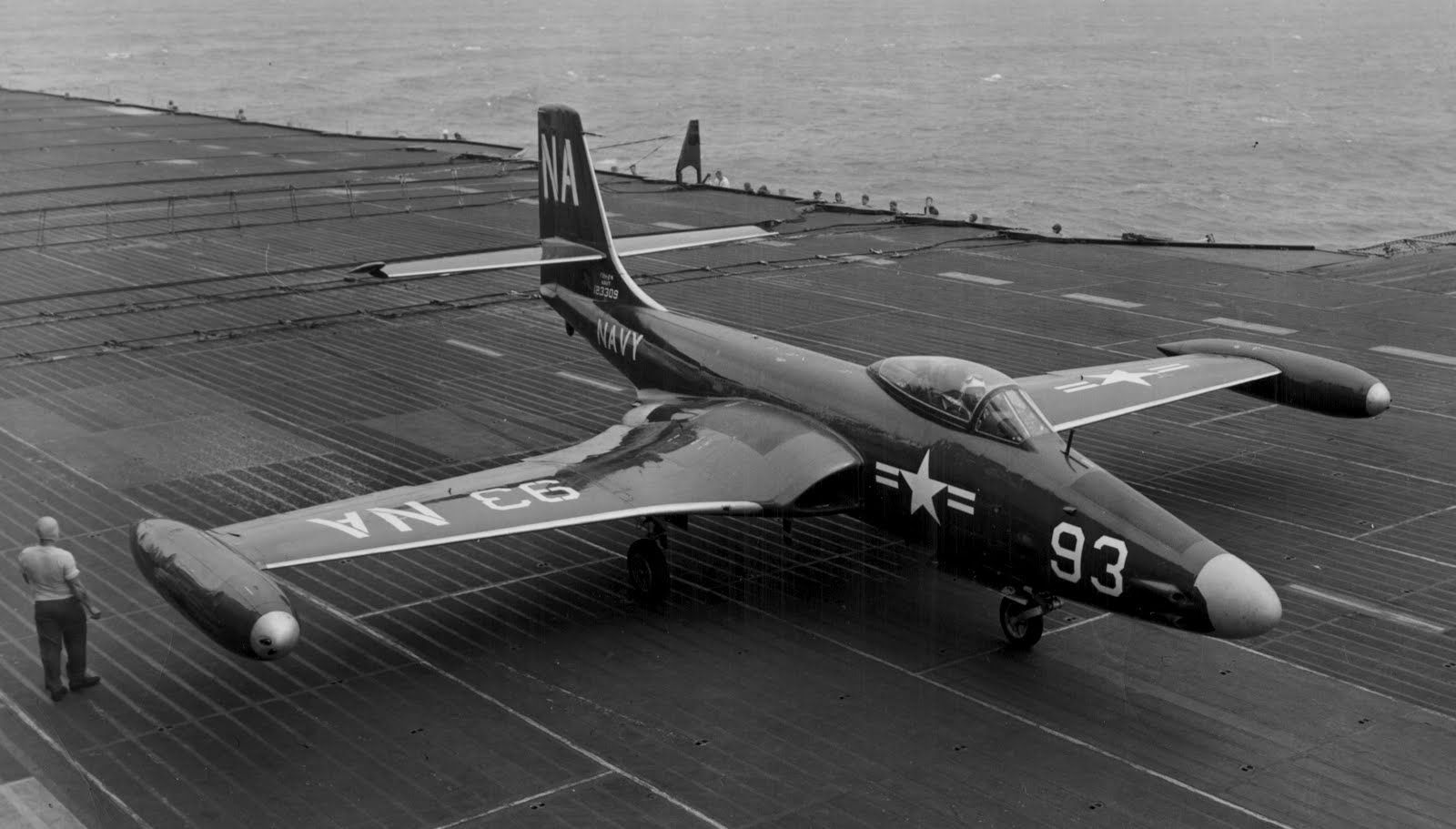

The "F2H-2P" was an unarmed reconnaissance variant, stretched by 70 centimeters (27 inches) with a long "duckbill" nose housing six cameras, giving a length of 12.9 meters (42 feet 5 inches). The cameras could be rotated in flight to shoot obliquely or vertically. The camera ports were heated to prevent them from fogging or frosting up. A pod could be fitted under each wing outboard of the flaps to carry photoflash flares, with each pod carrying 20 flares. The cameras were designed to automatically shoot when a flare went off.
Lacking armament, the F2H-2P was the lightest of the F2H-2 series, and though almost 10% slower than a stock F2H-2 due to its bulbous nose, it had better altitude capability. A standard F2H-2 was modified as the prototype, performing its initial flight on 12 October 1950. 89 were built.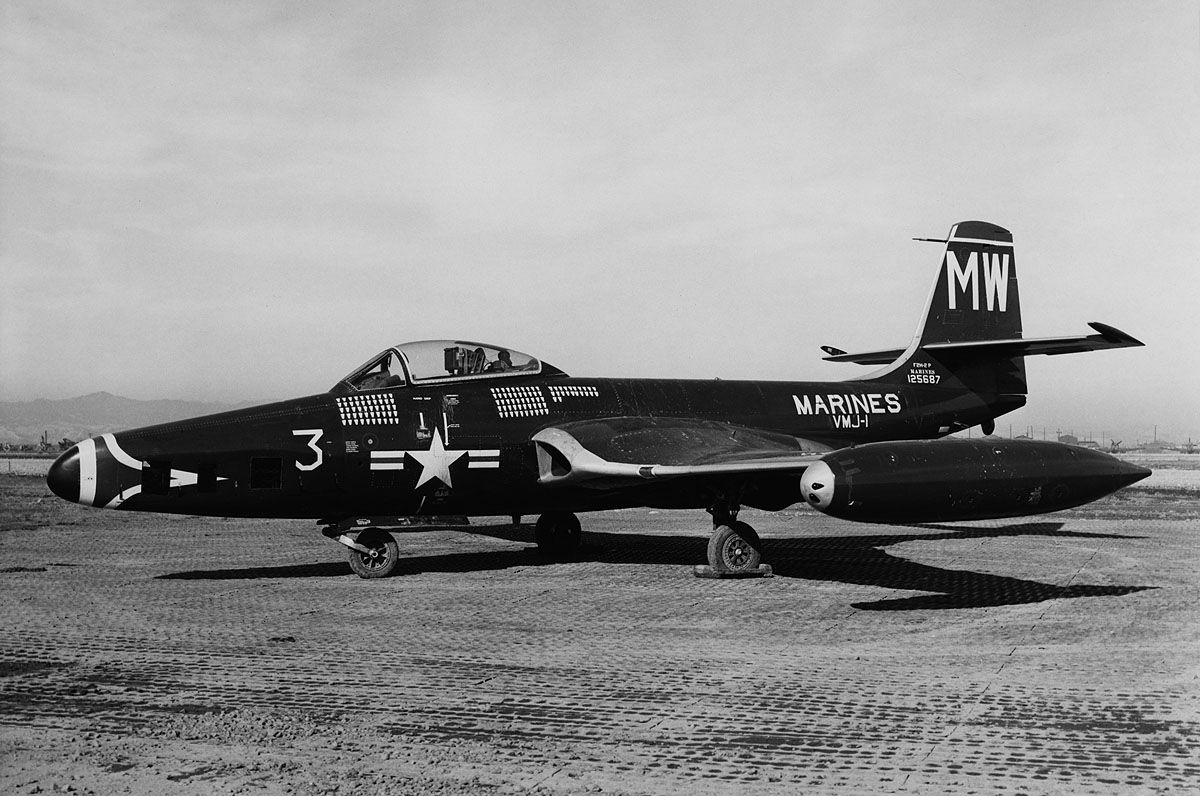
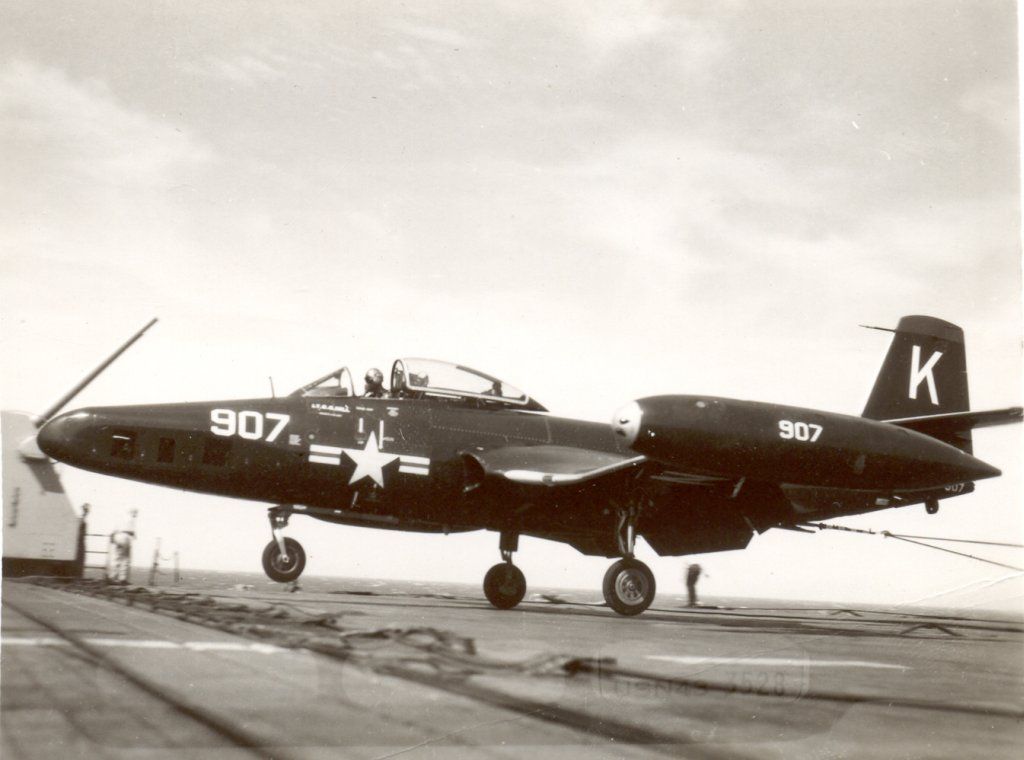
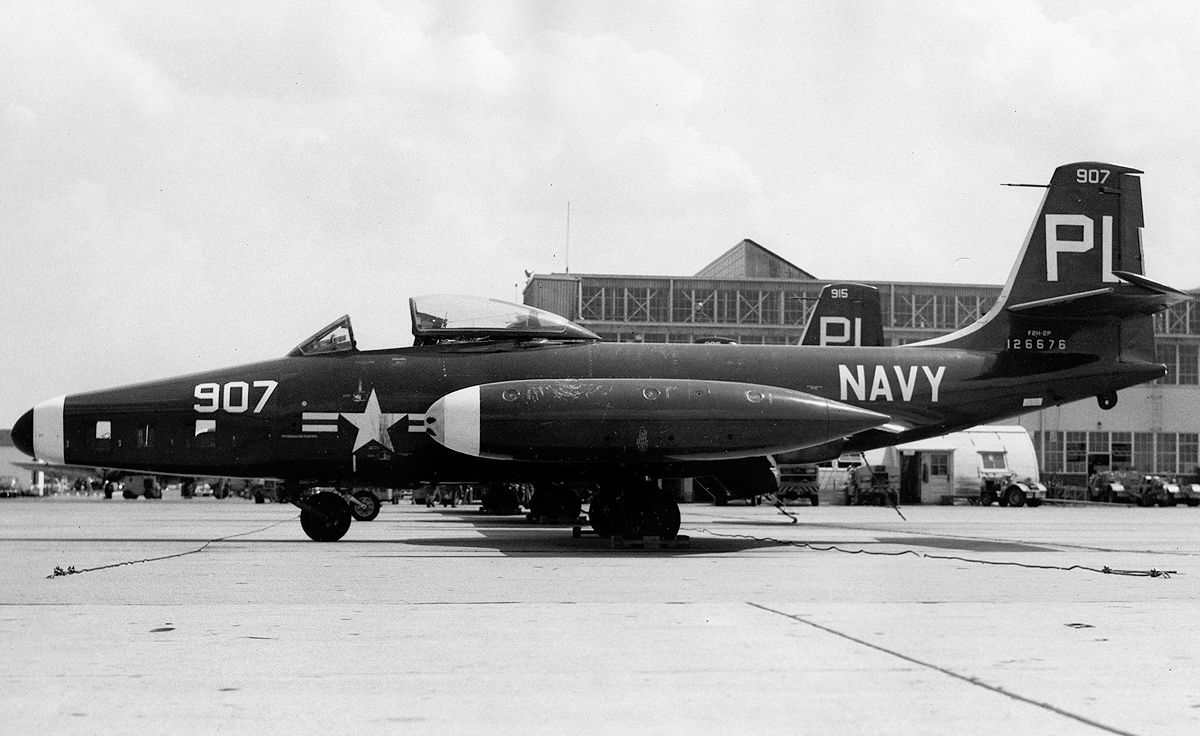
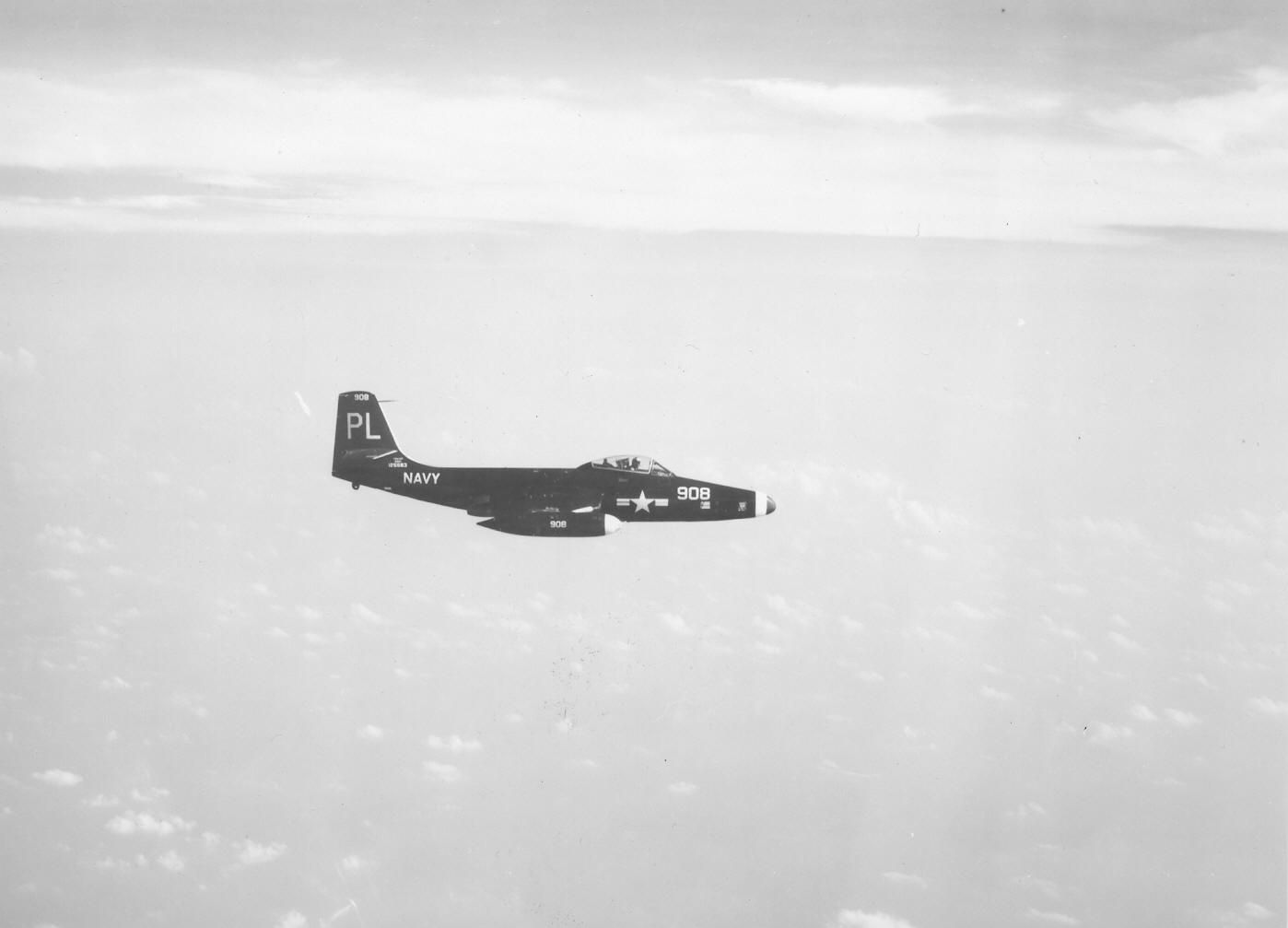

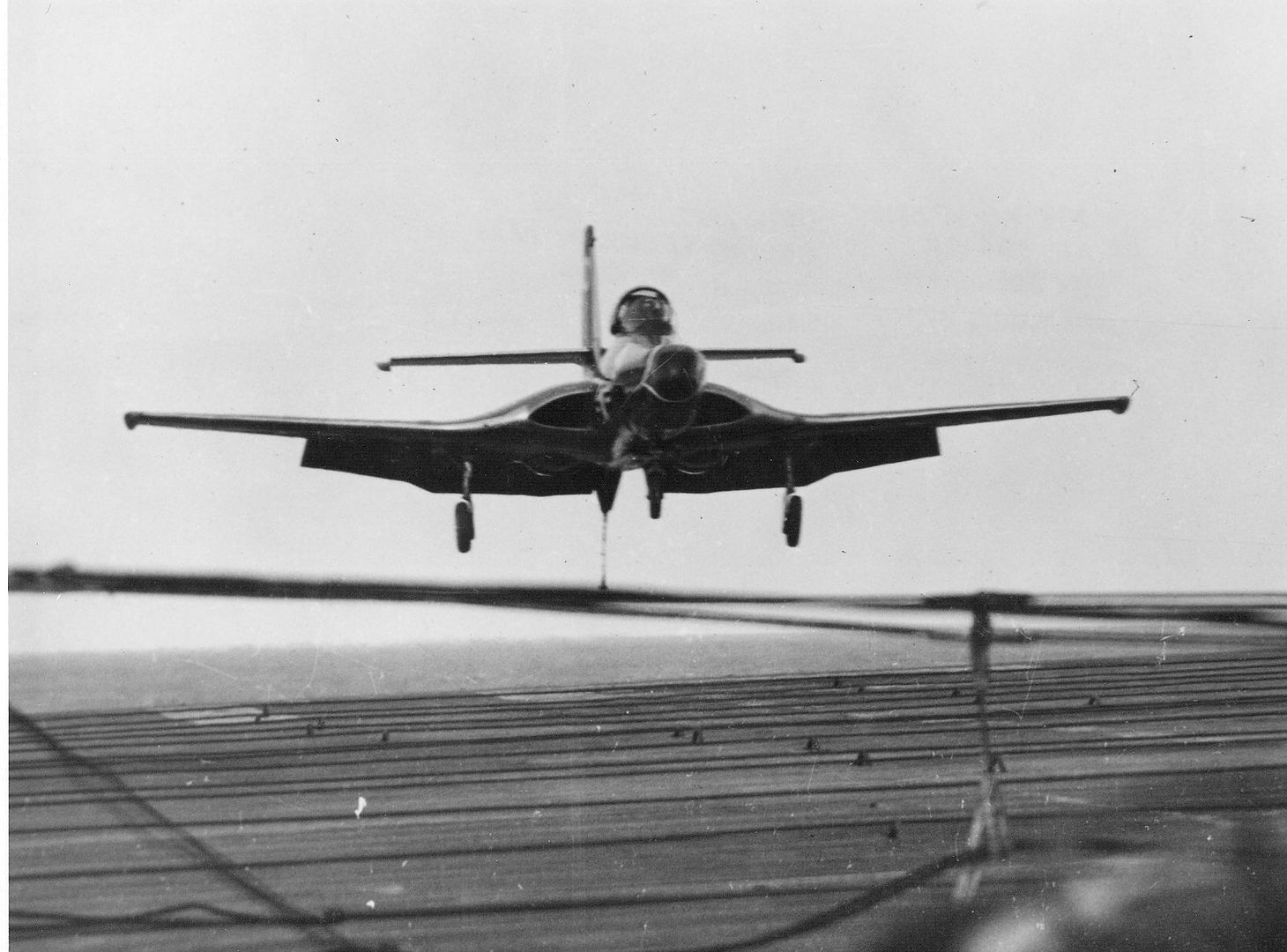

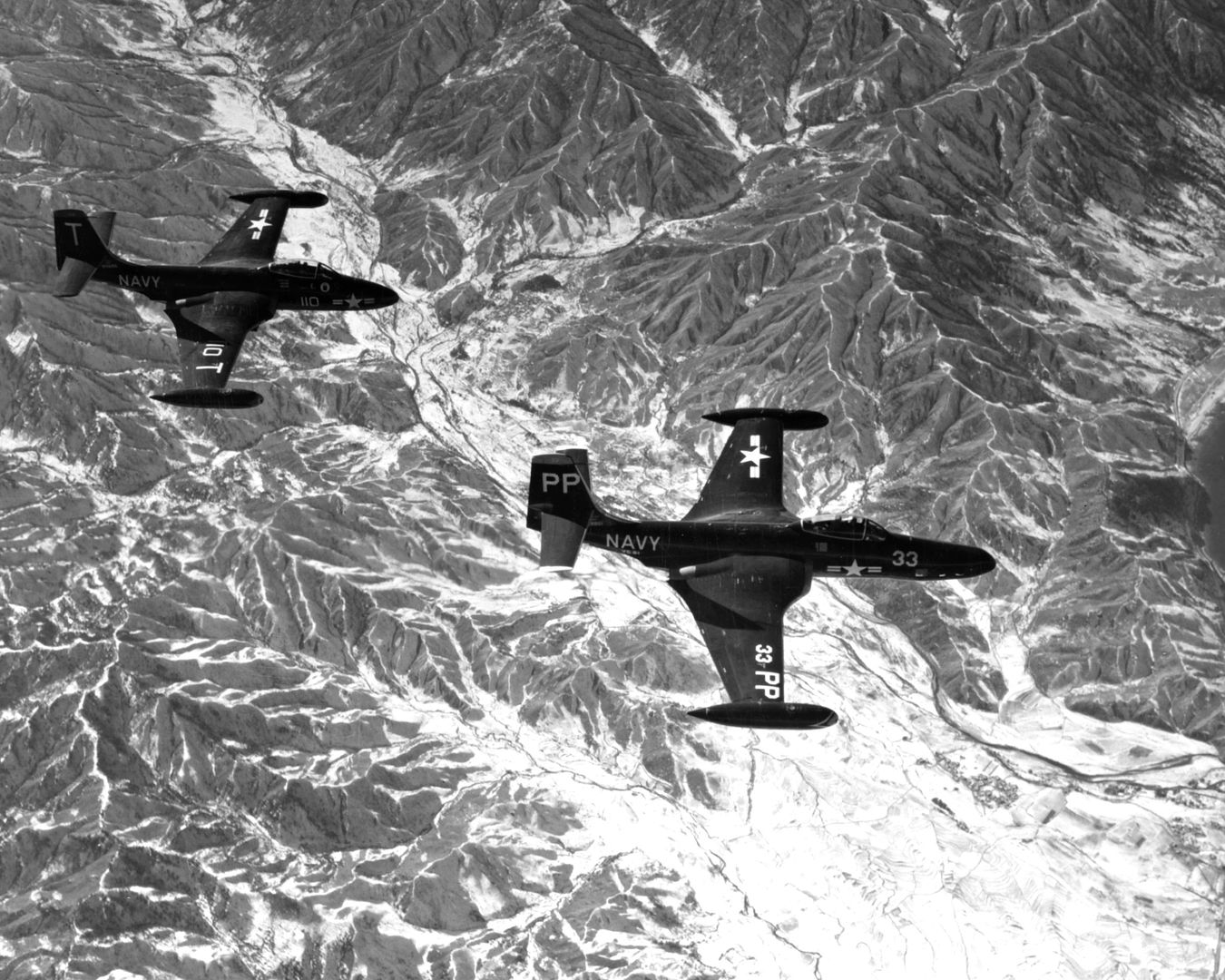

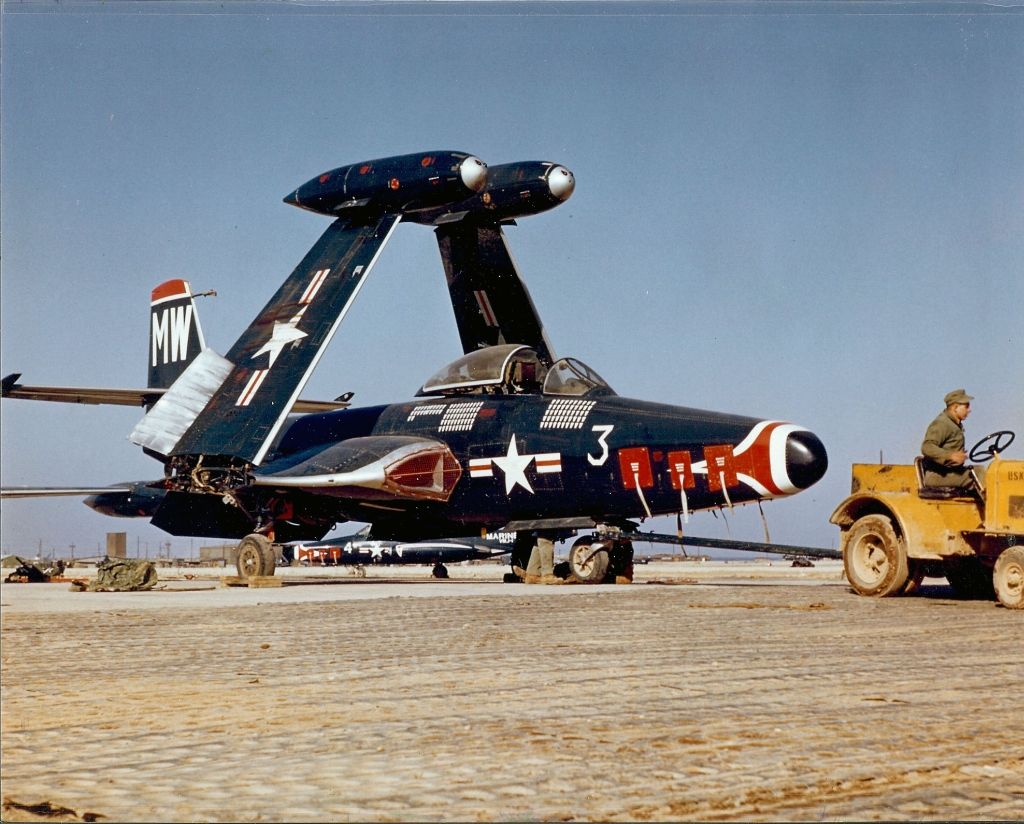
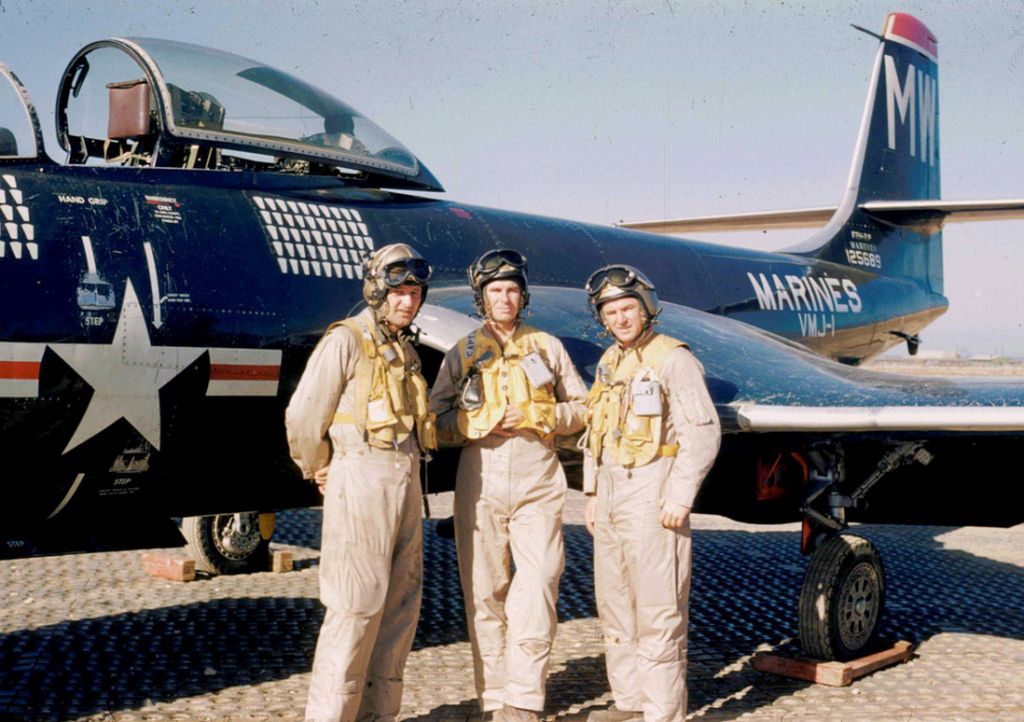
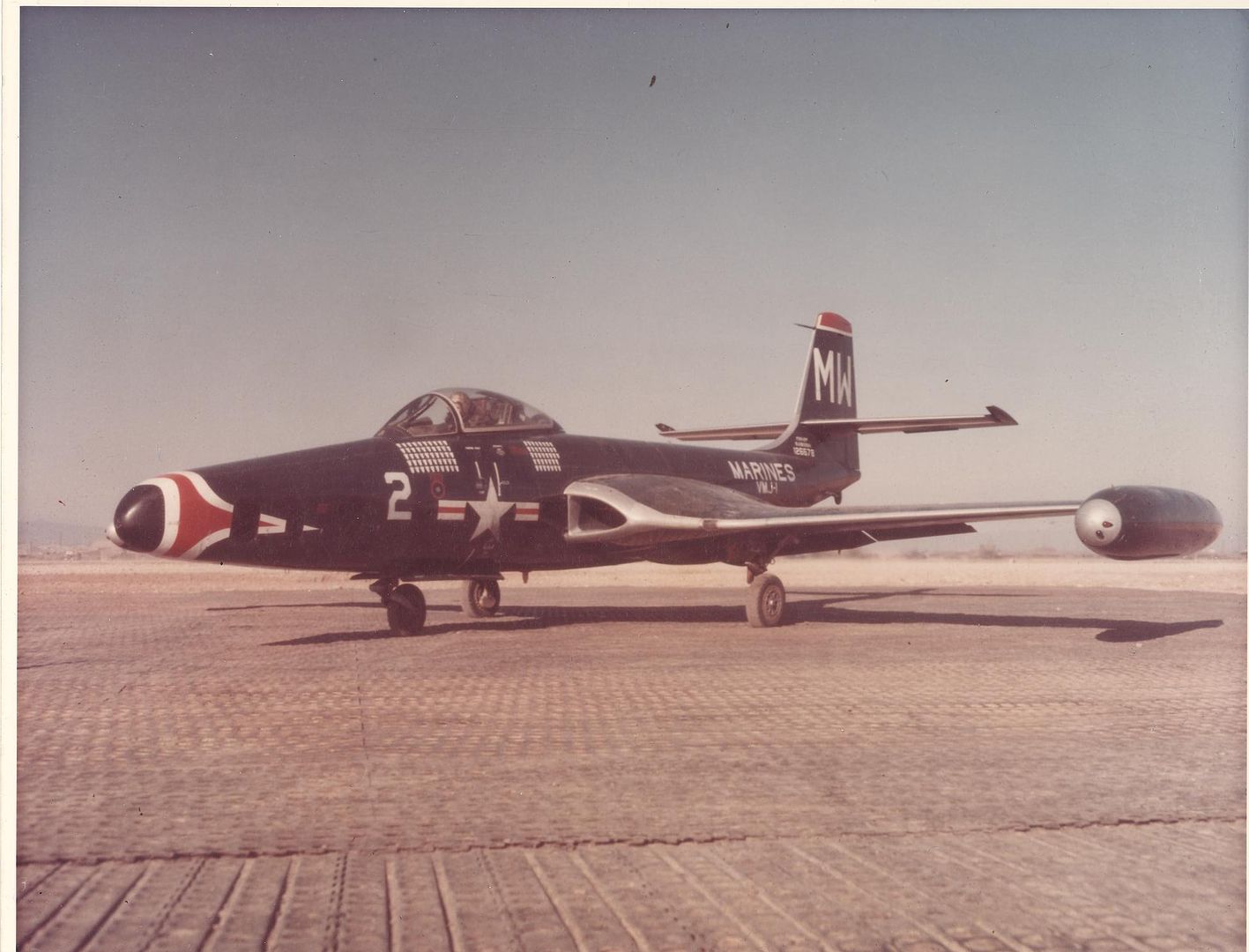
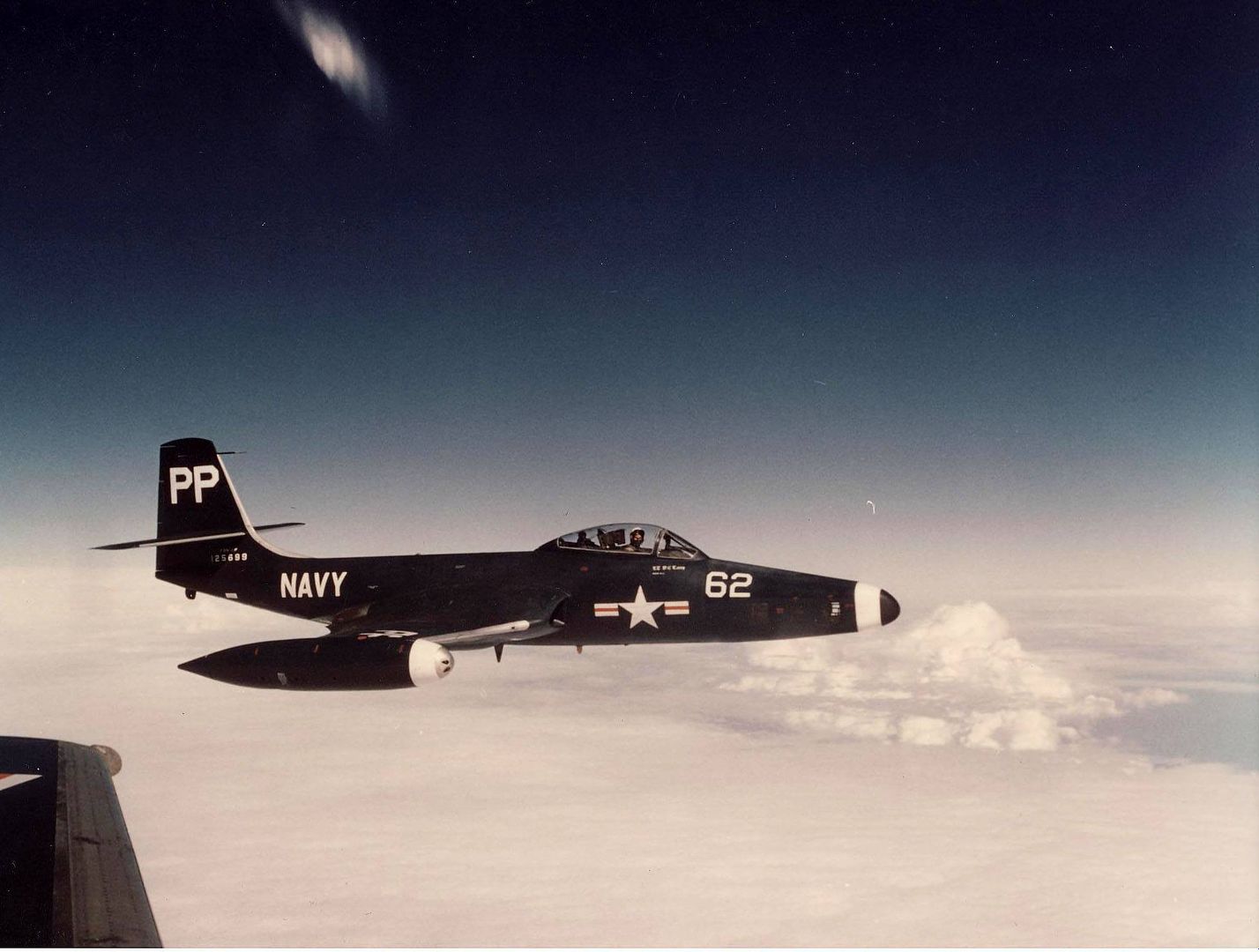
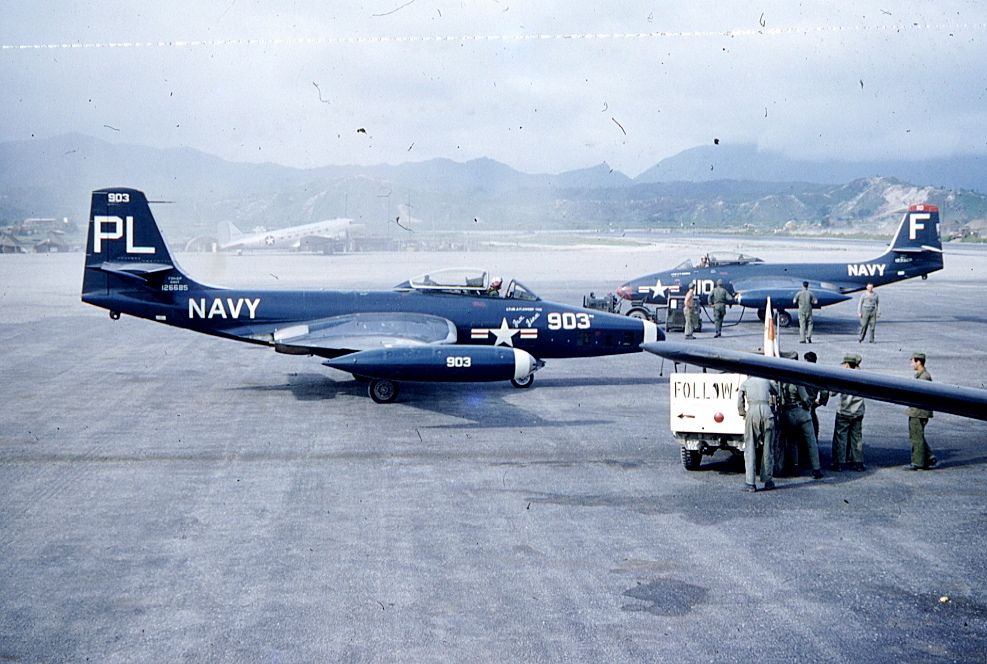
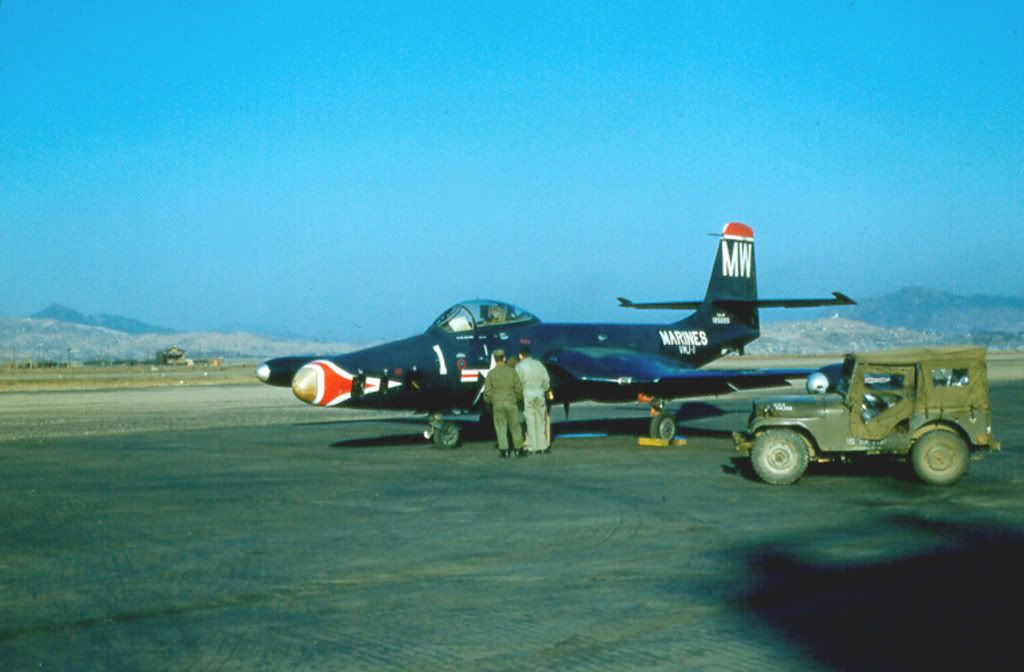
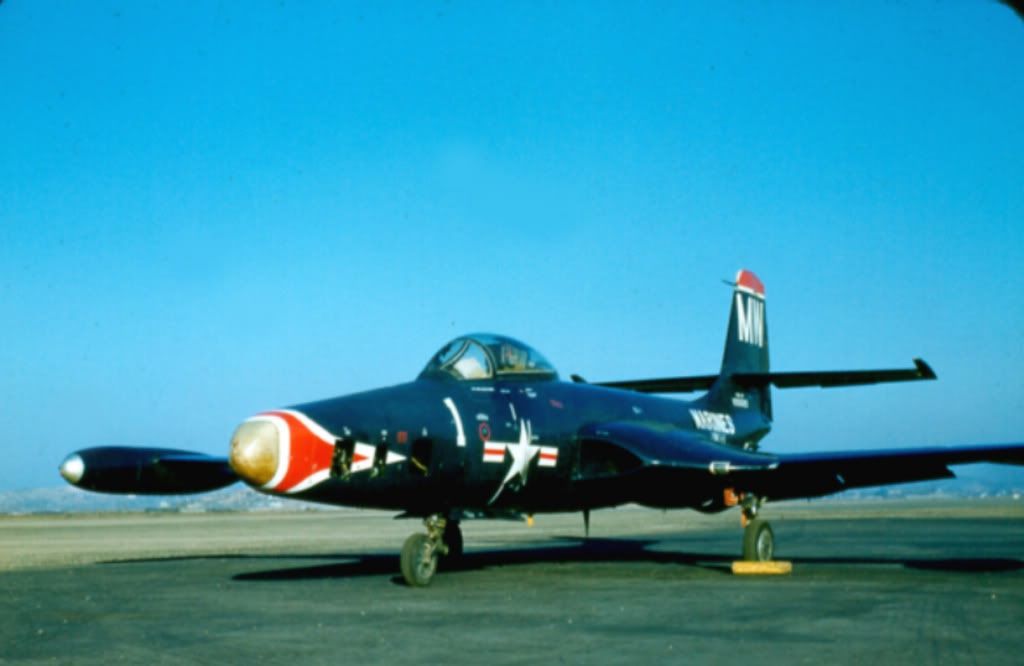
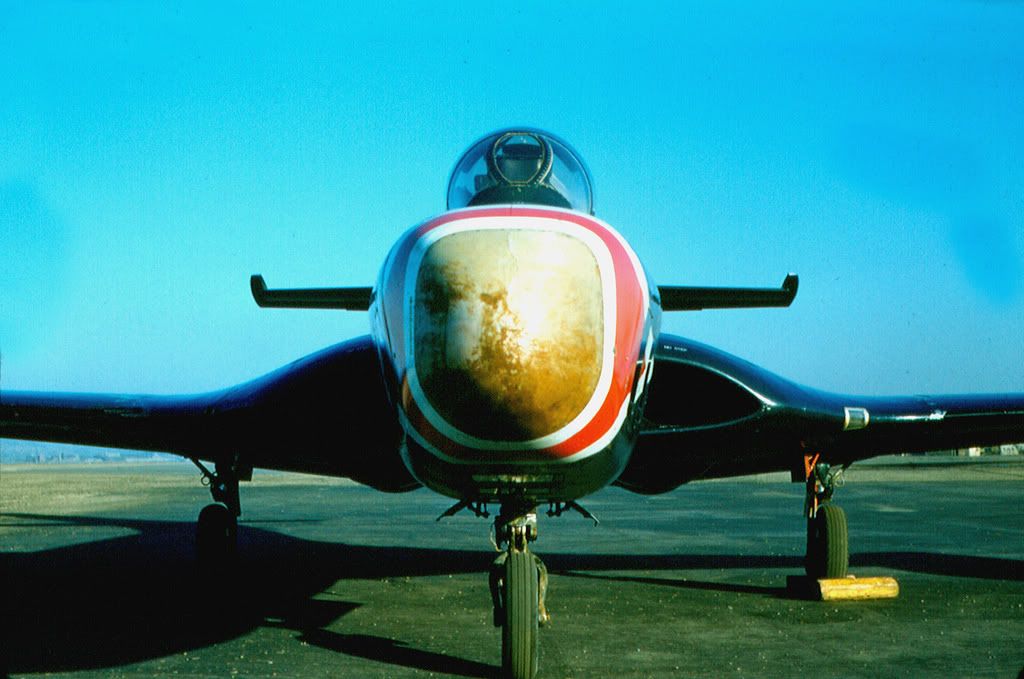
Most F2H-2s flew in overall sea blue colors, though sometimes colorful trim was added, particularly to the wingtip tanks. Pilots generally liked the Banshee, since it had good performance by the standards of the time, handled well, was very sturdy, and just as reliable. It had good range for a jet, and pilots learned to extend the range by cruising on a single engine.
The F2H-2 was in fleet service when the Korean War broke out in June 1950, but it would generally be a second-string player in the conflict, the Grumman F6F Panther taking more of the honors. The limited use of the Banshee in Korea was evidence of the fact that the war there was regarded as a sideshow to the global confrontation with the Soviet Union, since Banshee deliveries to the Atlantic and Mediterranean took priority over operations in the Korean theater. Squadron VF-172 flew F2H-2s in the conflict off the USS ESSEX from August 1950 into the fall of 1951. The F2H-2 didn't come back for another year, when the USS KEARSARGE arrived with VF-11 in the later months of 1952. The KEARSARGE was spelled by the USS LAKE CHAMPLAIN, with VF-22 and VF-62, from the spring of 1953 up to the final cease-fire in late July. The F2H-2s fought mostly in the strike role, the type being a stable bombing platform and rugged. There were a number of losses; no Banshee claimed an air-to-air kill.
The F2H-2P reconnaissance variant was a more persistent participant in the war, with detachments from VC-61 and VC-62 providing photo-reconnaissance backup to naval strike elements and Marine squadron VMJ-1 providing similar service under the general command of the US Air Force Fifth Air Force. VMJ-1 was the only Marine Banshee unit to fight in Korea, it appears generally flying off of land bases. The reconnaissance mission was dangerous, particularly for post-strike damage assessment when the enemy was generally alert and agitated, and F2H-2Ps invariably had a fighter for escort -- or more than one for missions over heavily defended targets, with the fast USAF F-86 Sabres doing the escort honors in the most dangerous areas.
* Aircraft design was moving rapidly in the 1950s and the F2H-2 was quickly obsolete, being out of first-line service soon after the end of the war, but lingering in reserve service for a few more years. The F2H-2P remained in service as a first-line naval reconnaissance asset up to the mid-1950s. In mid-decade the Navy changed aircraft color schemes, and the F2H-2Ps were then generally painted in gull gray topside and white underneath.
F2H-3 & F2H-4 BANSHEE / CANADIAN BANSHEES
In response to combat experience and trials with the radar-equipped F2H-2N, McDonnell engineers came up with a major redesign of the F2H-2, the "F2H-3". An F2H-2N was modified as the prototype, with the initial flight of a production F2H-3 on 29 March 1952, and the type in service before the end of the year.
The F2H-3 was stretched by 2.4 meters (8 feet) to accommodate an AN/APG-41 radar and 50% more internal fuel capacity. The tailplane was moved back down onto the tail of the fuselage and, after initial prototype trials showed a tendency toward tail flutter, reinforced by triangular leading-edge extensions. The tailplane also had a 10 degree dihedral.
The four 20 millimeter cannon were retained, but moved back to the lower fuselage under the cockpit. The M3 cannon were updated to the improved Mark 12 or Mark 16 Hispano-type cannon firing a more powerful round, with the top cannon featuring a load of 220 rounds per gun and the lower cannon featuring a load of 250 rounds per gun. There were two stores pylons under each engine nacelle and two stores pylons under each outer wing, for a total of eight -- with some F2H-3s fitted with a special heavyweight pylon between the fuselage and one of the engines for a nuclear store.
The wingtip tanks were reduced in size to 644 liters (170 US gallons). The tip tanks were not always fitted in operational service, and plenty of pictures show F2H-3s flying without them. An inflight refueling probe could be fitted for ferry flights and the like by yanking the upper left cannon and installing the probe through the cannon port. To handle the higher weights, uprated J34-WE-36 turbojets with 14.5 kN (1,475 kgp / 3,250 lbf) thrust each were fitted. There was talk of an "F2H-3P" photo-reconnaissance variant, but it didn't happen.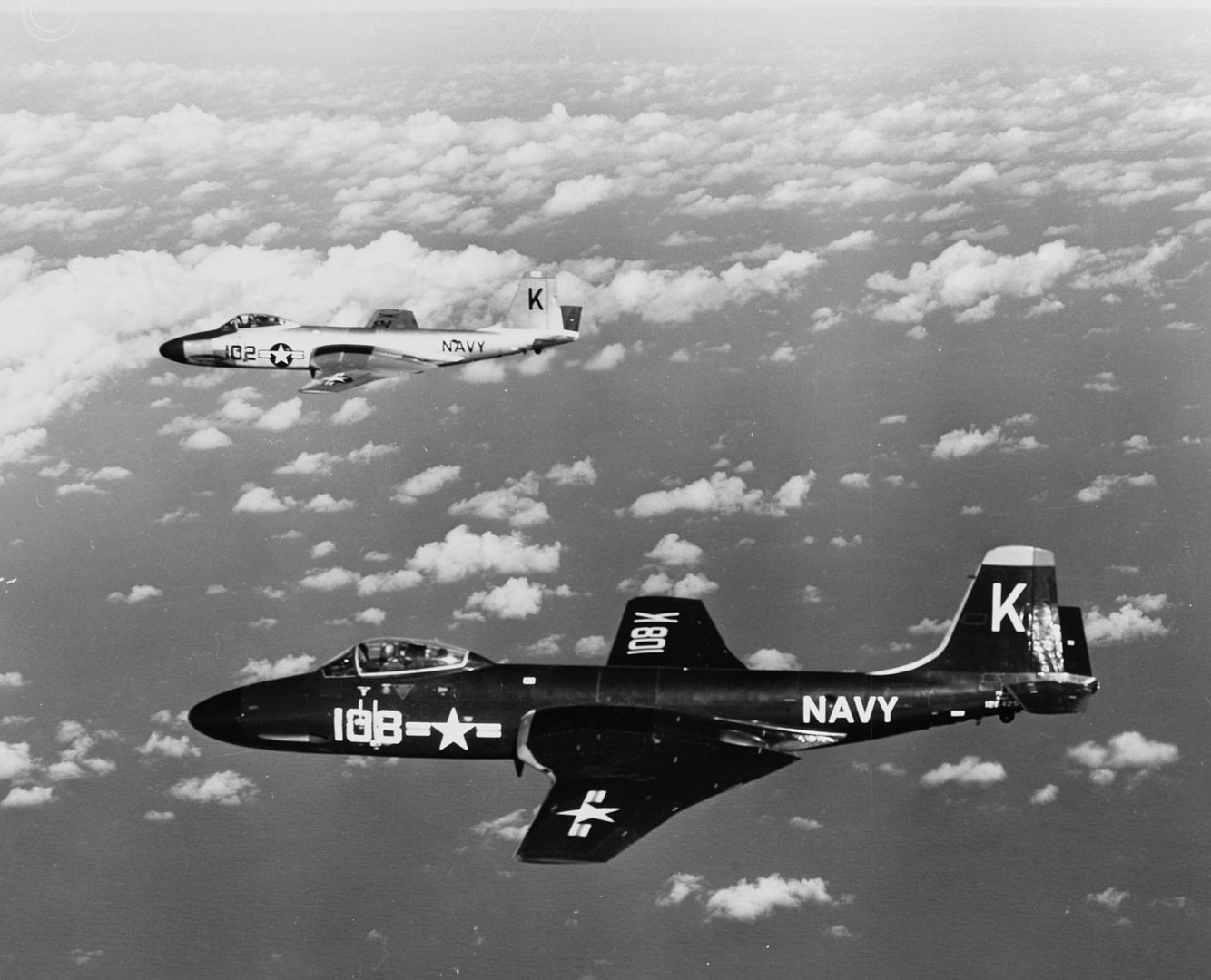
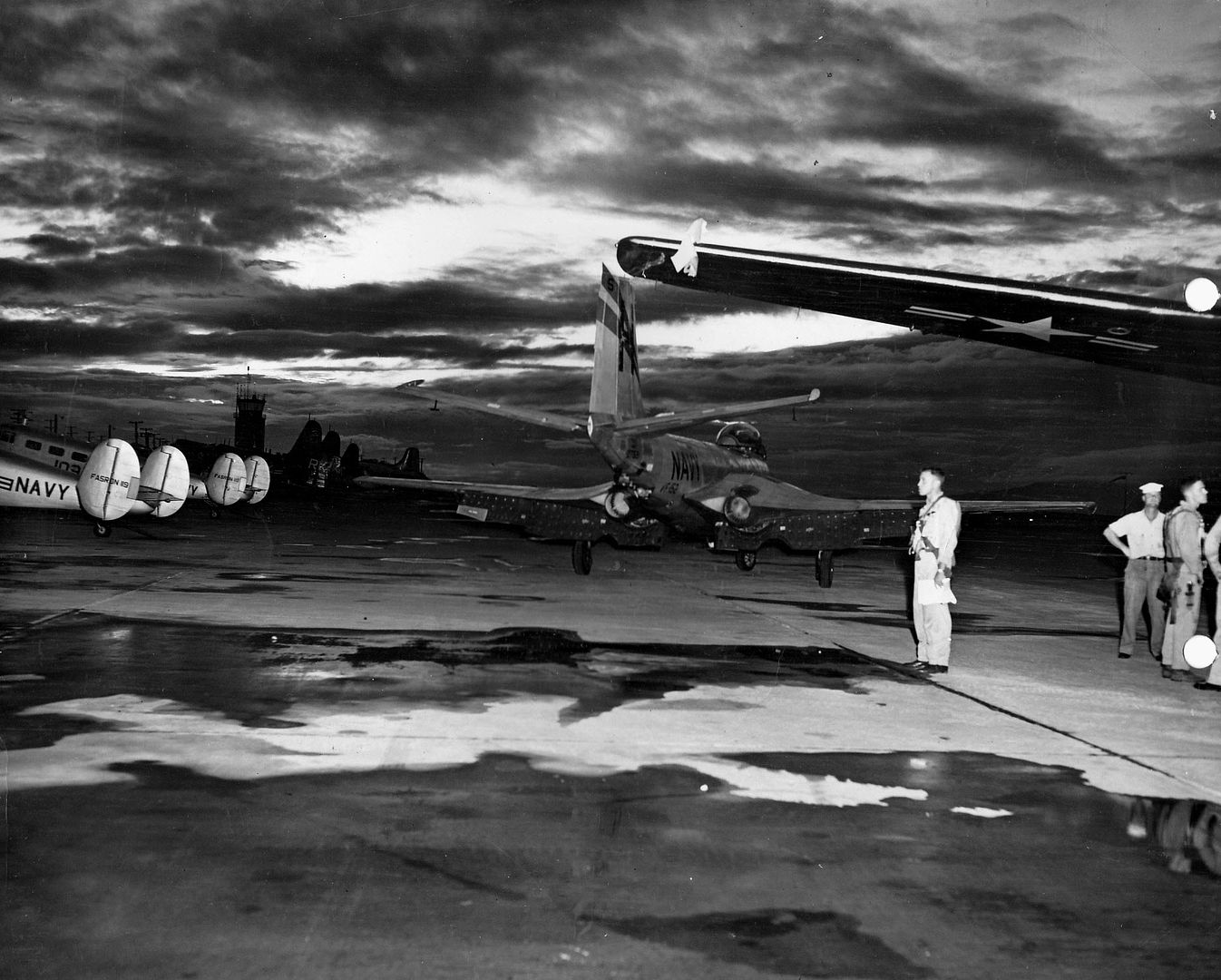
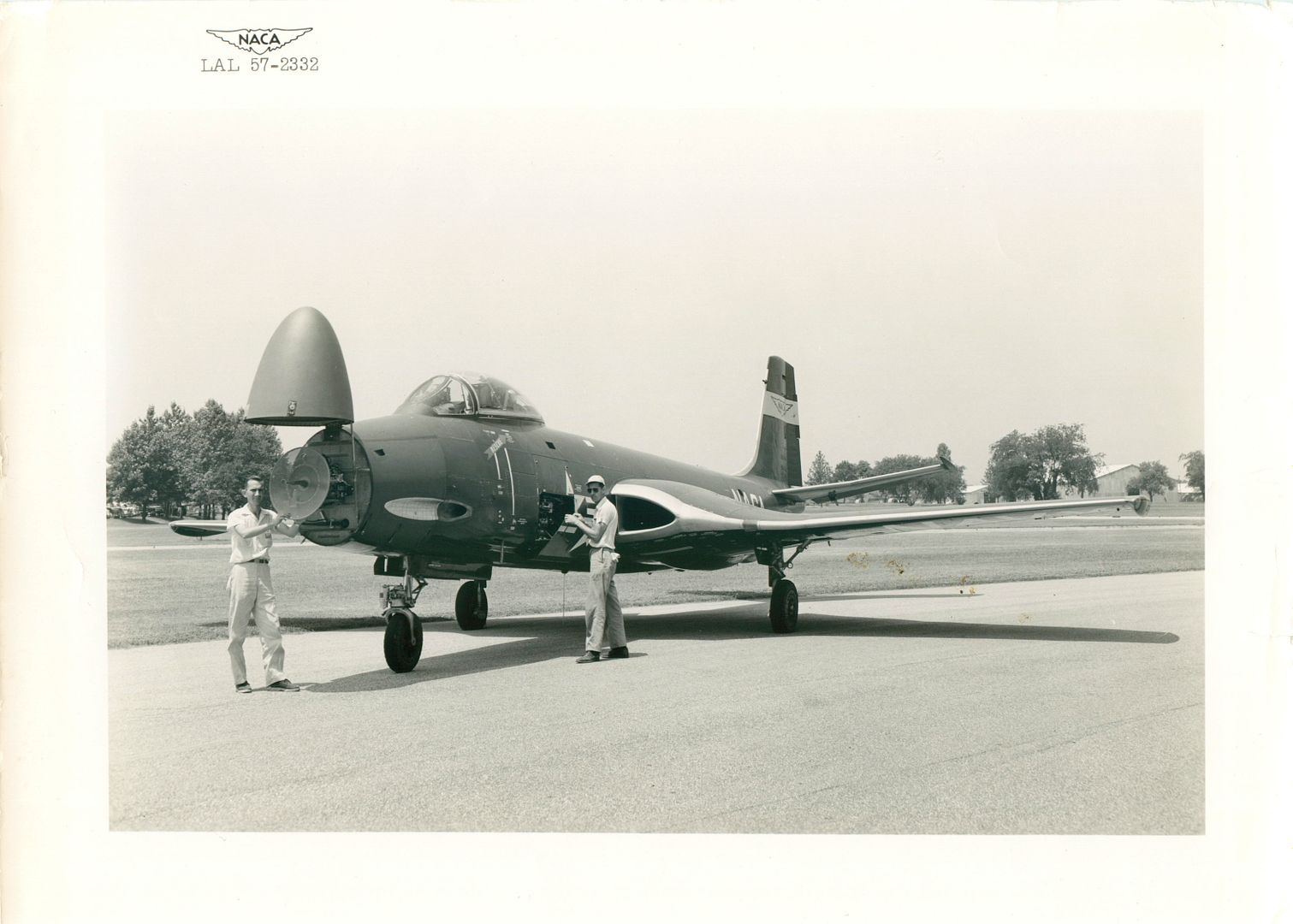
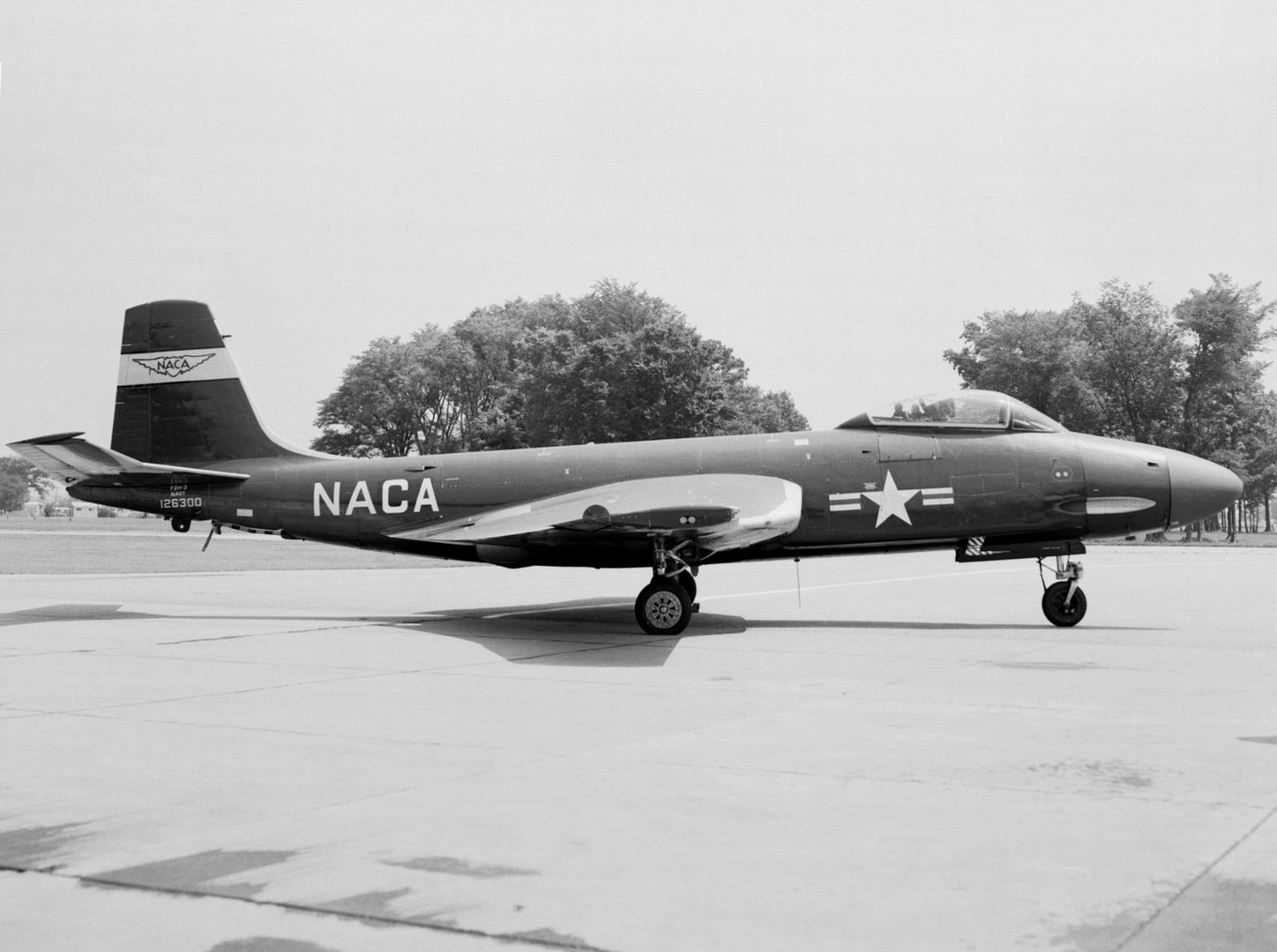
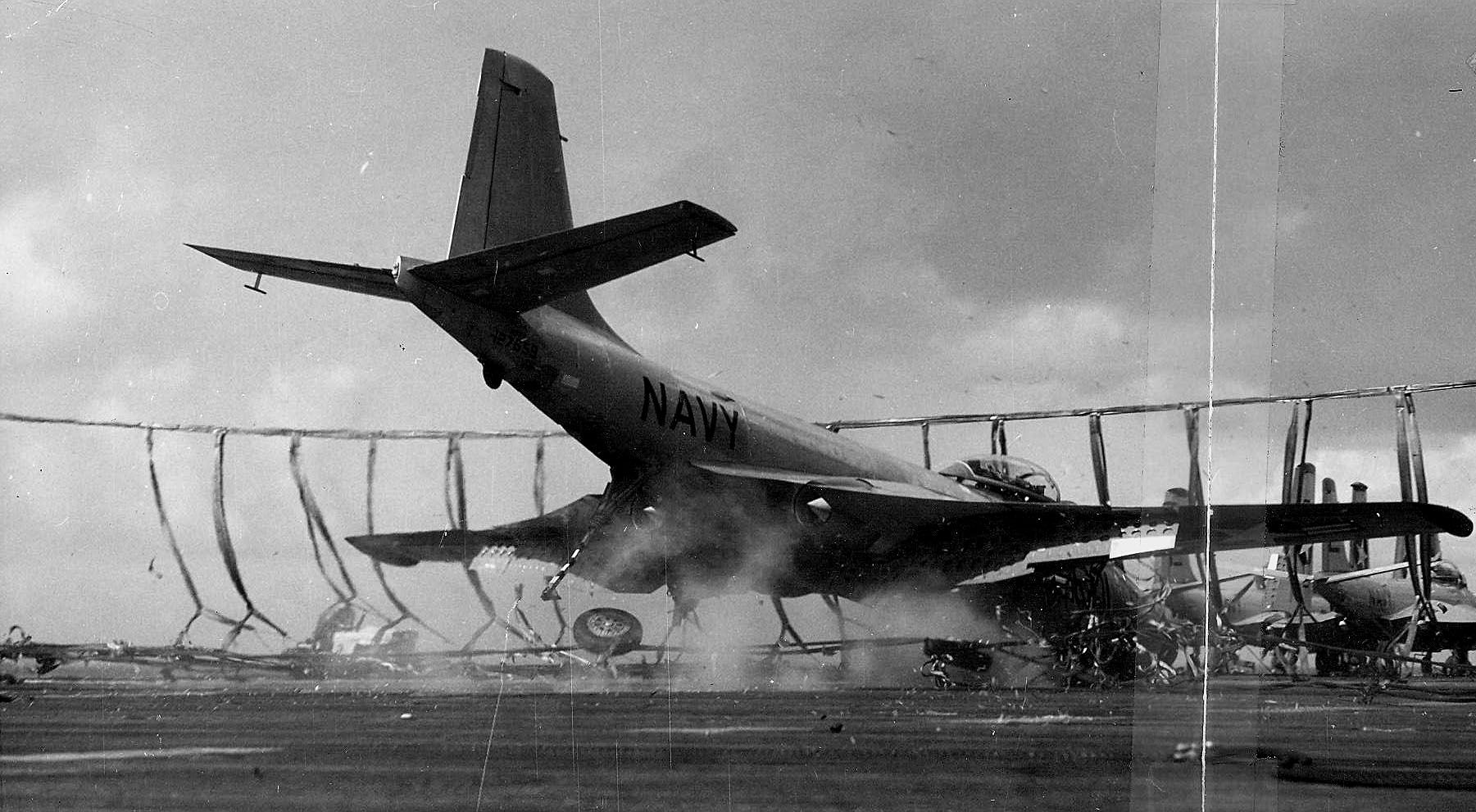
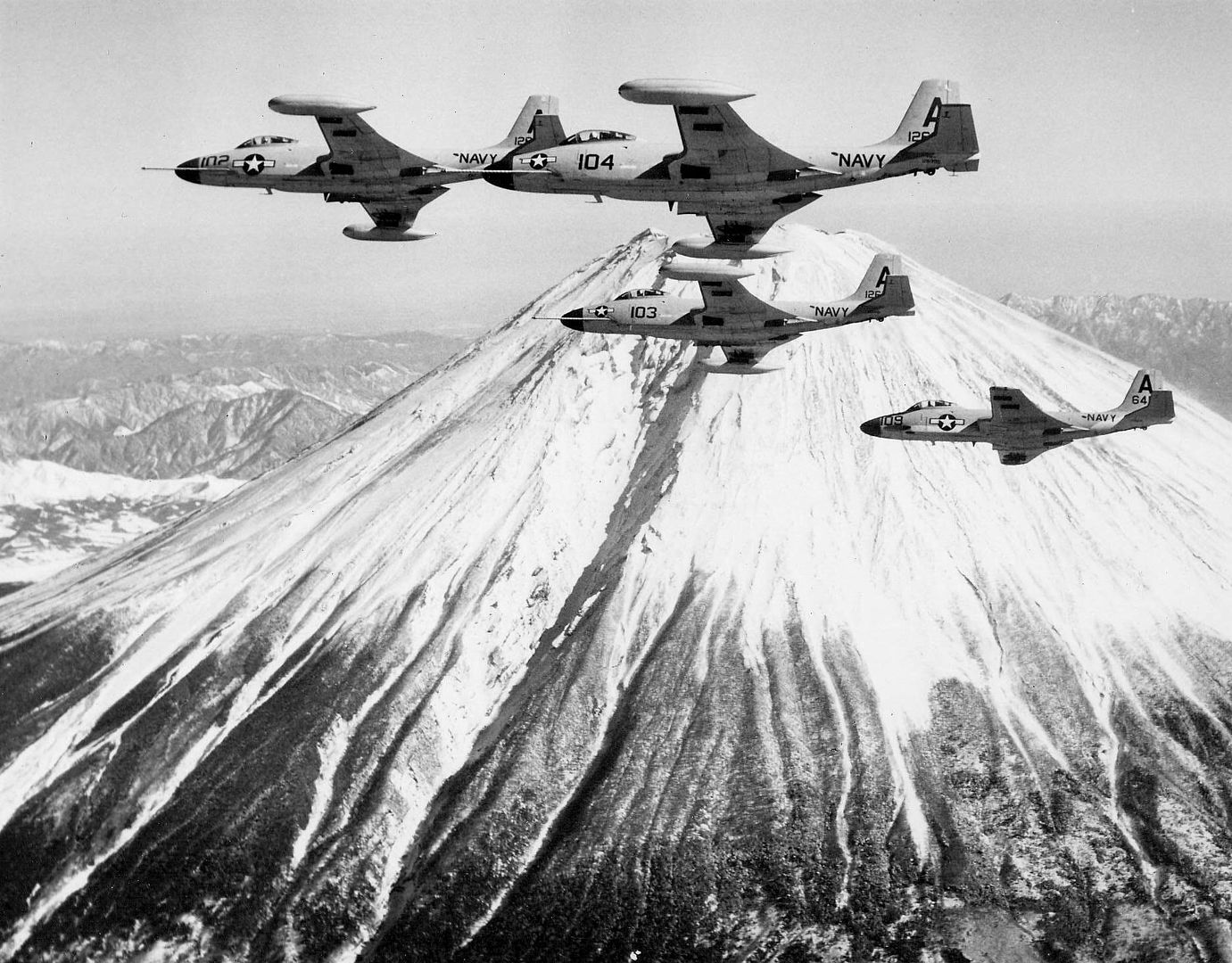
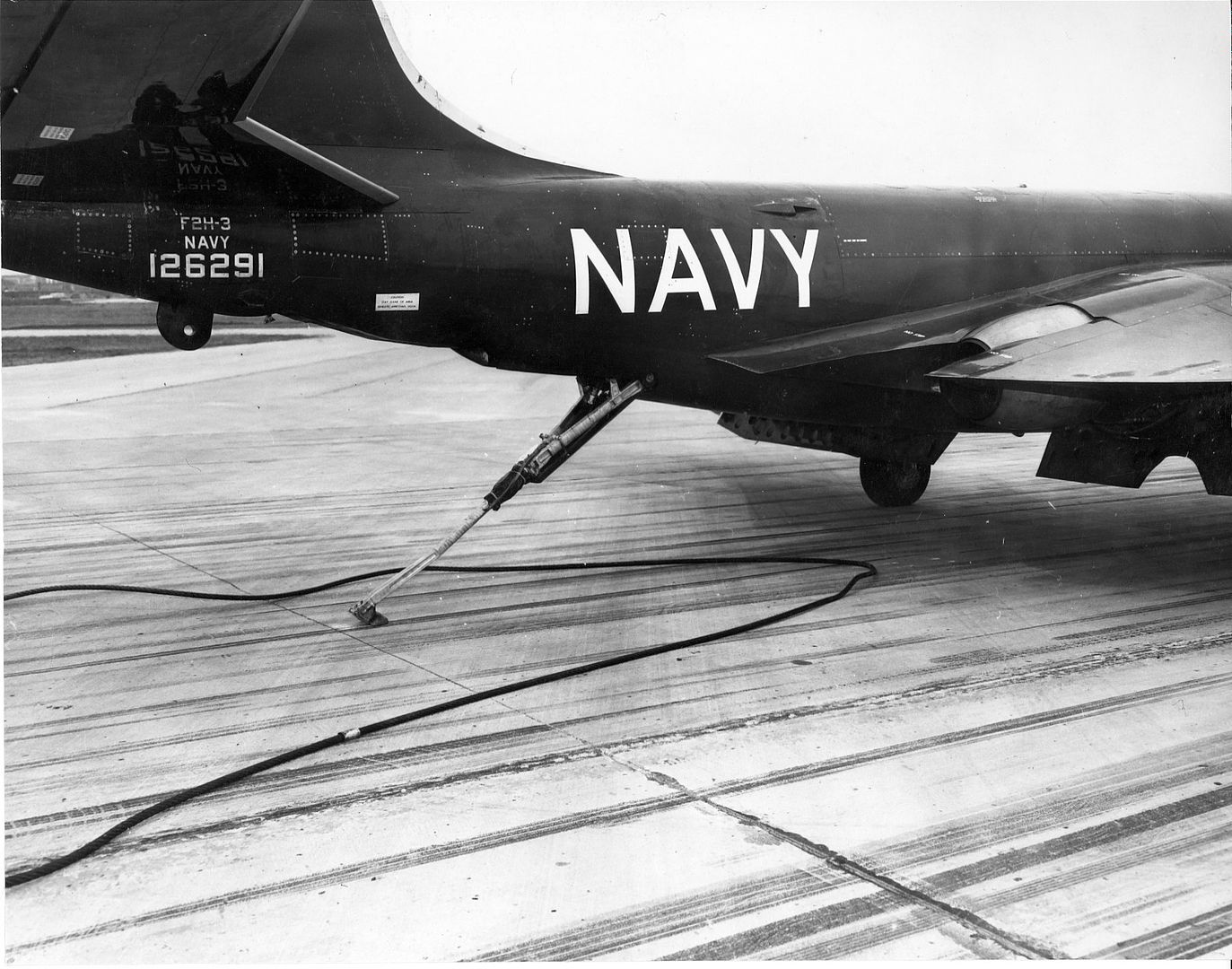
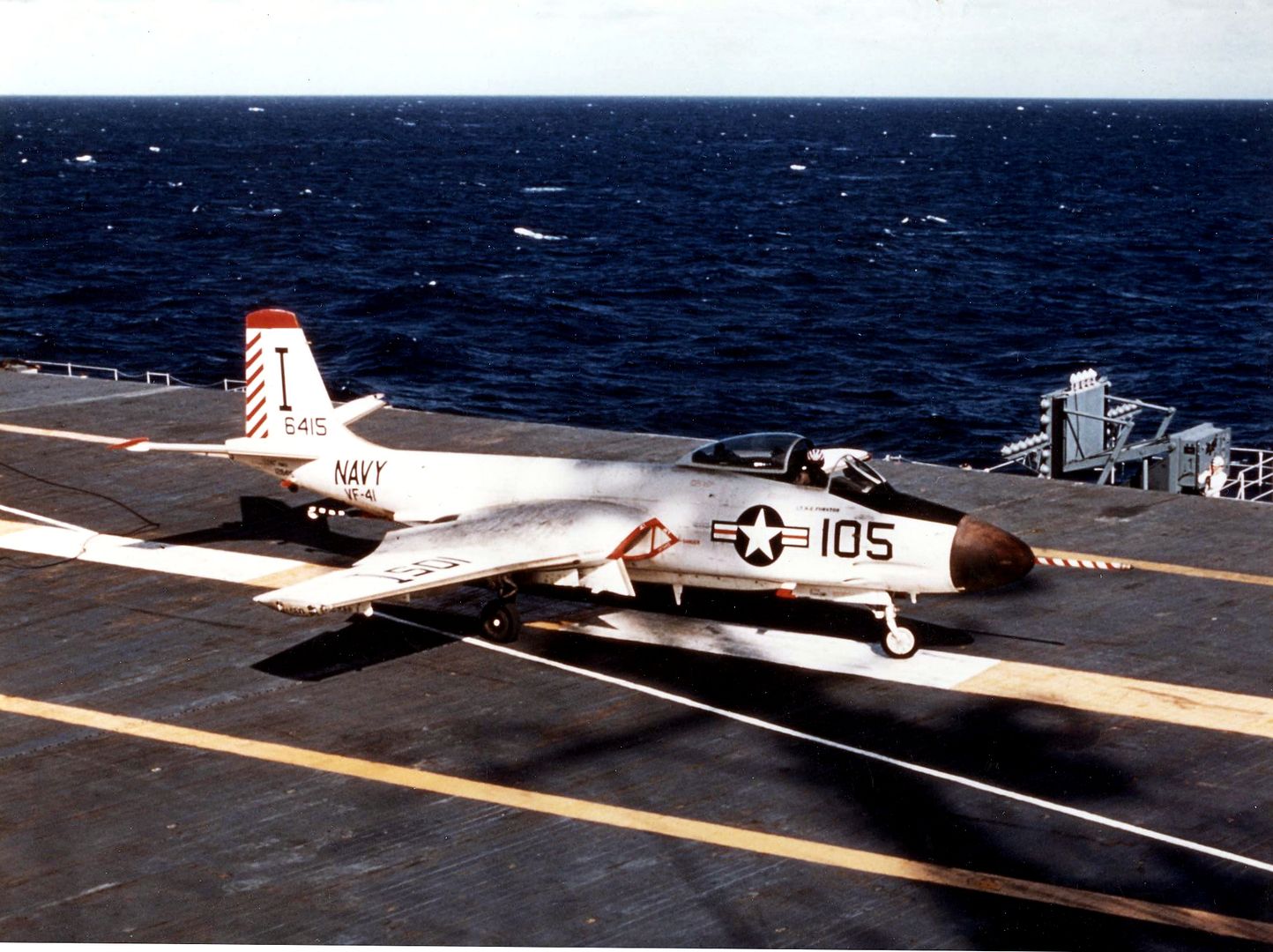
Even while F2H-3s were being rolled out in Saint Louis, a modest improvement on the F2H-3 was in the works. The "F2H-4" was all but impossible to distinguish from the F2H-3 externally, the major changes being fit of further uprated J34-WE-38 turbojets with 16.0 kN (1,630 kgp / 3,600 lbf) thrust each and Westinghouse AN/APG-37 radar. The new engines provided about a 5% increase in speed and a 10% increase in range, but not everybody was impressed by the new radar.
* A total of 250 F2H-3s was built to shutdown of the Banshee production line on 30 October 1953; F2H-4 production of 150 machines had already been completed in September. The Marines were only provided with the F2H-4 in first-line service, though some Marine Reserve squadrons did fly Navy F2H-3 hand-me-downs. It doesn't appear that the F2H-3 or F2H-4 ever fired a shot in anger, though there were running incidents of air battles along the borders of Communist countries during that era that were kept very quiet.
The F2H-3/4 gave the Navy the service's first all-weather jet fighter, with the types serving through the 1950s. Early machines retained the overall sea blue color scheme; some flew in anodized aluminum metal finish for a time, though this led to corrosion problems, and in mid-decade they went to the gull gray / flat white color scheme. Late in the decade, the F2H-3/4 were armed with twin Sidewinder air-to-air missiles. The F2H-3/4 was out of service by the end of 1961, but a number were still in mothballs in 1962 when the common Air Force / Navy aircraft designation scheme was introduced, and so the F2H-3 and F2H-4 were redesignated to "F-2C" and "F-2D" respectively.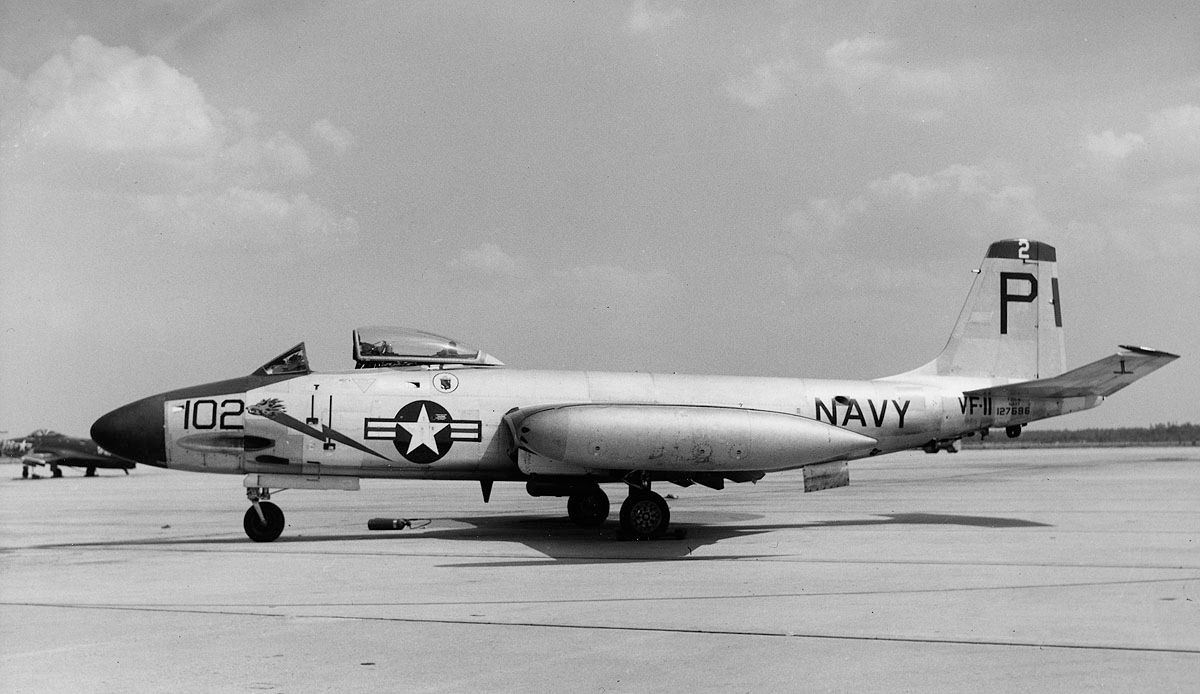
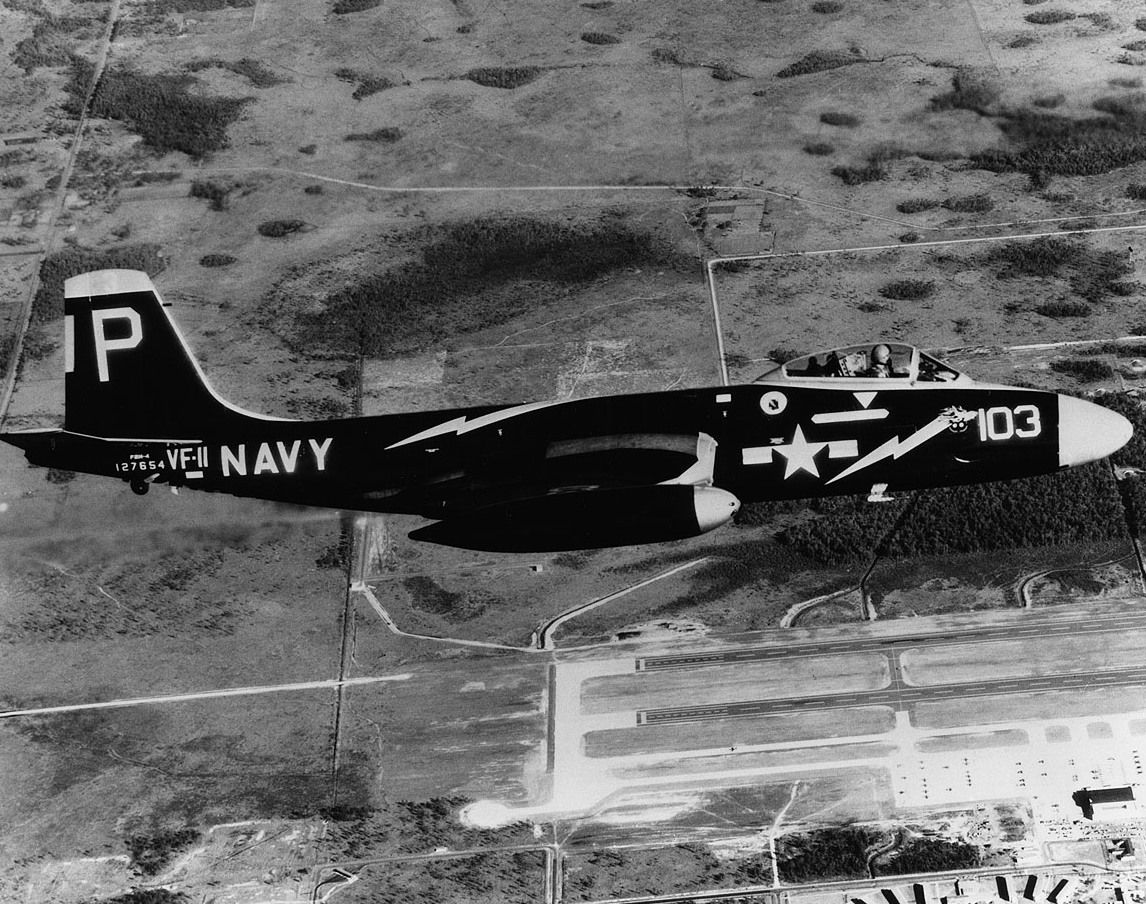
_in_flight_over_San_Diego_.jpg?width=1920&height=1080&fit=bounds)
_20_April_1956..jpg?width=1920&height=1080&fit=bounds)
_landing_aboard_USS_INTREPID_(CVA-11)_20_April_1956..jpg?width=1920&height=1080&fit=bounds)
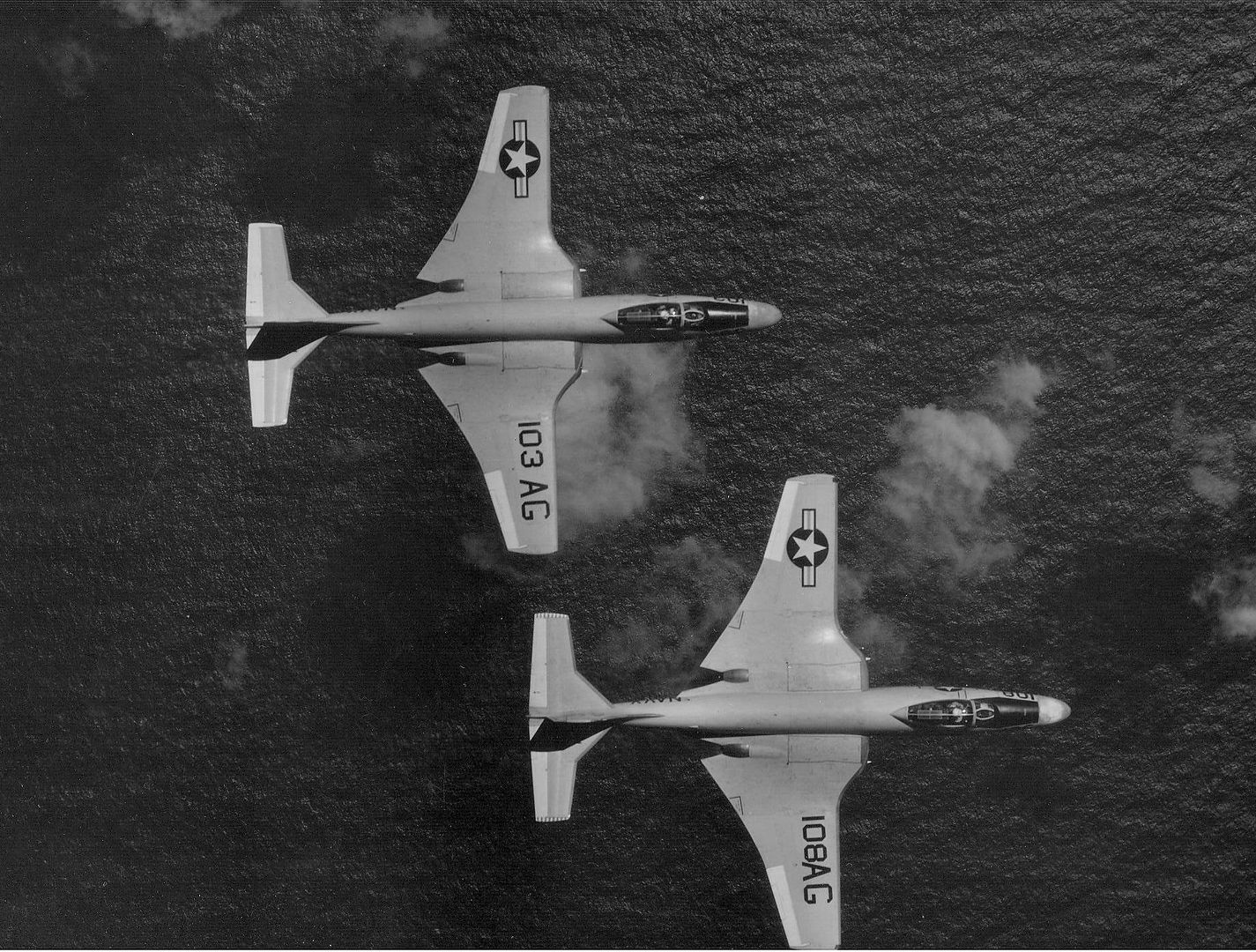
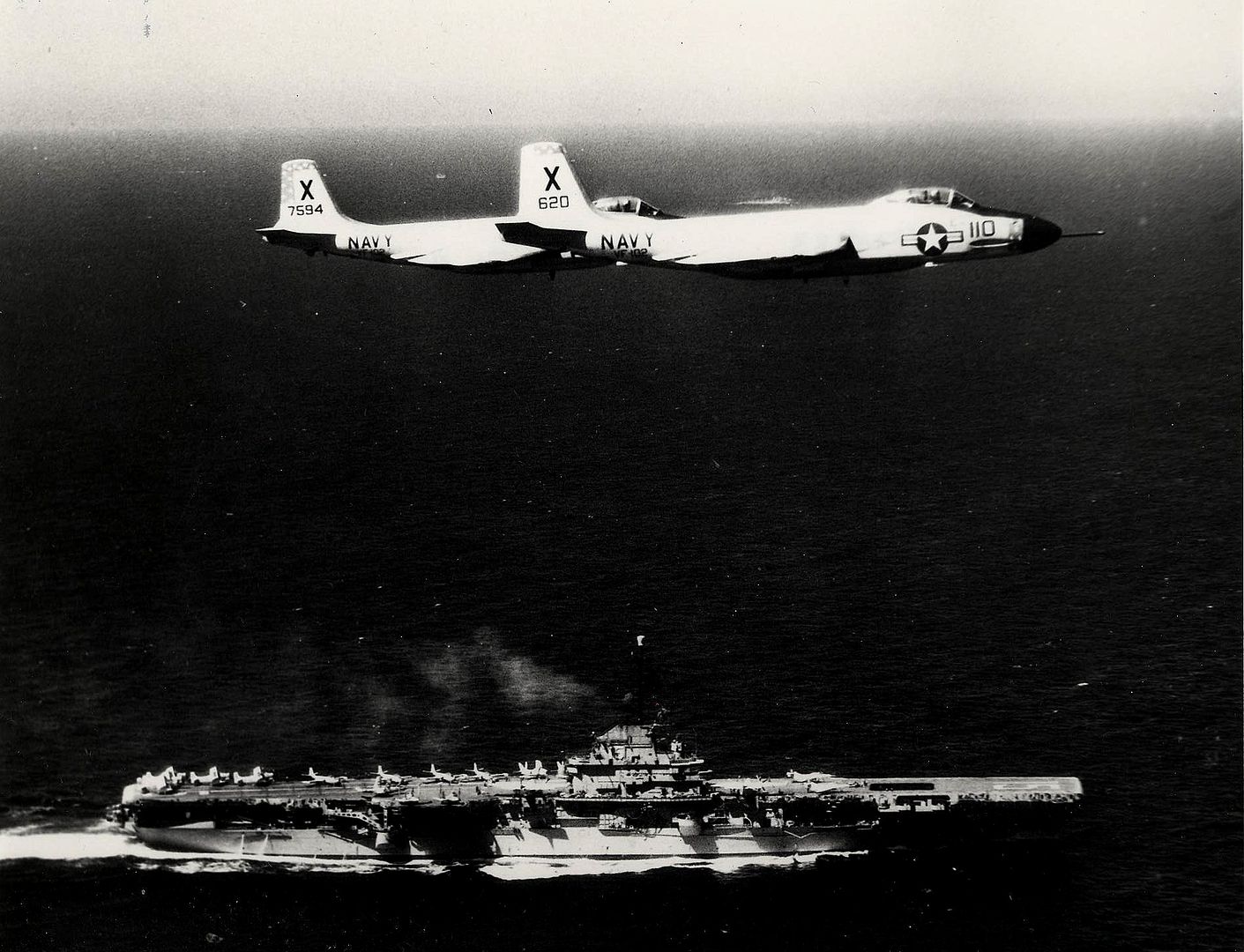
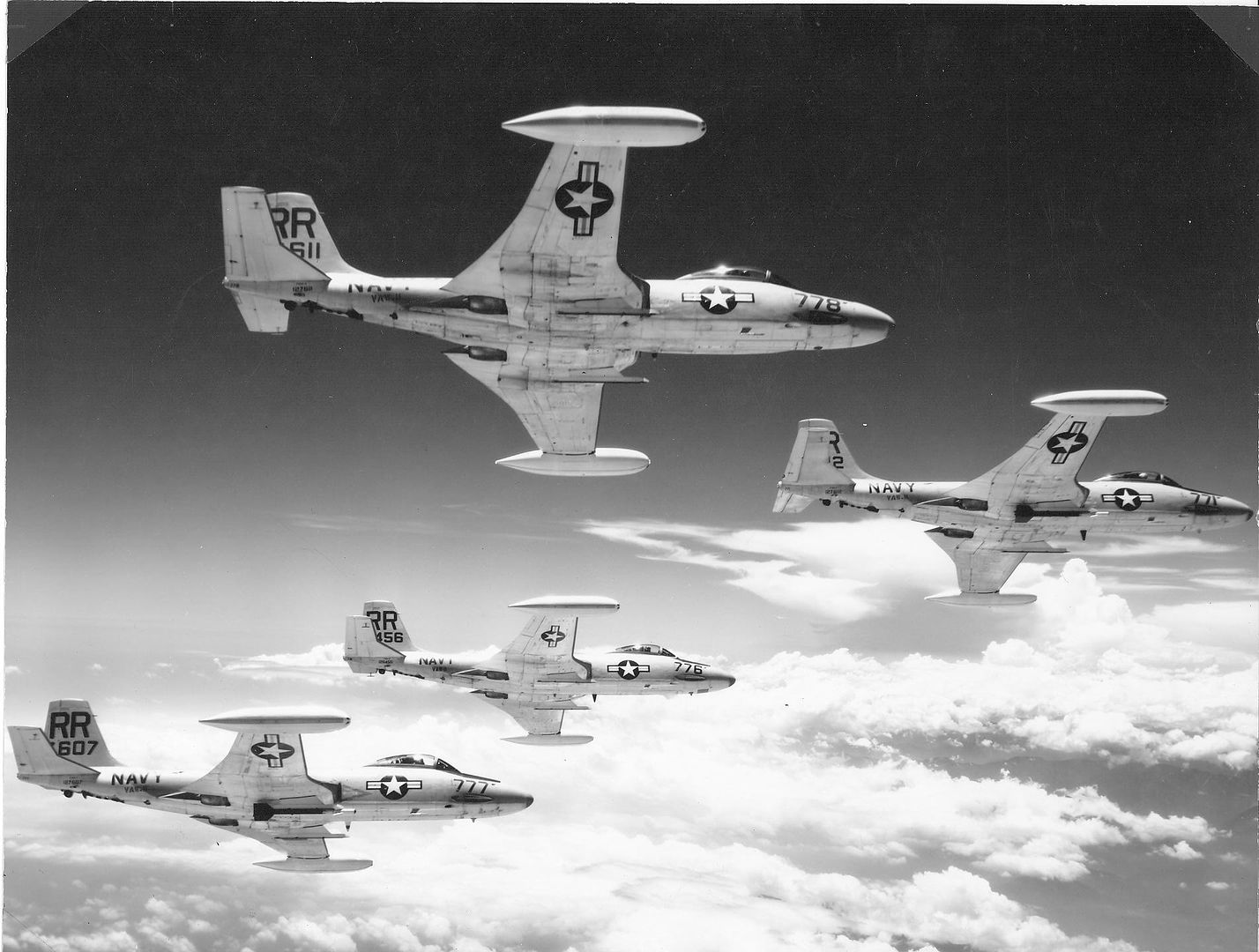


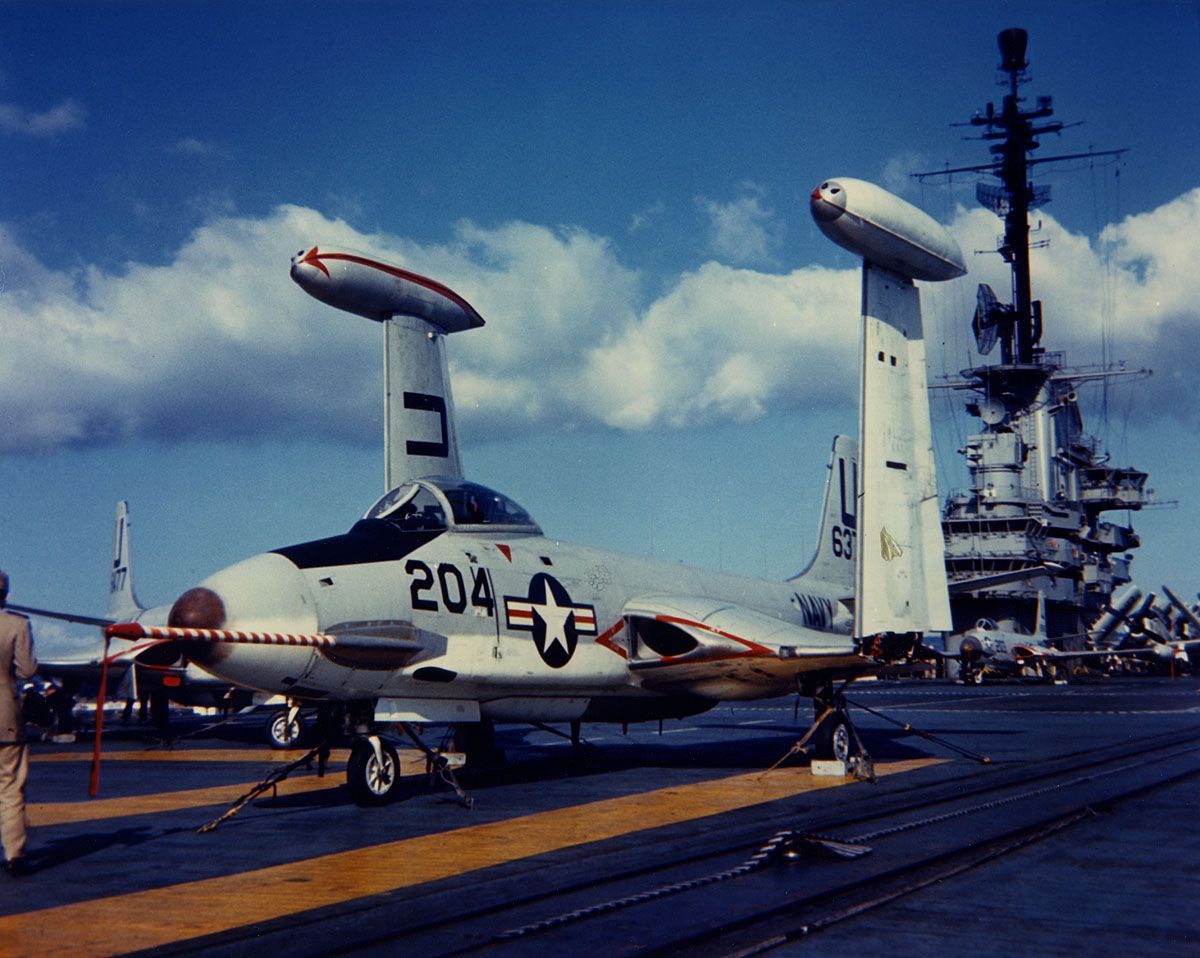

From 1955 into 1958, the US Navy passed on 39 F2H-3s to the Royal Canadian Navy, and these aircraft equipped two squadrons on the carrier HMCS BONAVENTURE. Refueling kits were not provided. These aircraft were painted in dark sea gray topside and light gray on the bottom, and carried Sidewinders from 1958. There were a number of accidents early on that led to grounding of the Canadian Banshee fleet; the incidents were traced to metal fatigue in the wing fold, with the problem fixed and the aircraft returned to flight. The last of these machines were phased out in 1962. Although a number of Banshees survive as static displays in museums and the like, none remain in flying condition.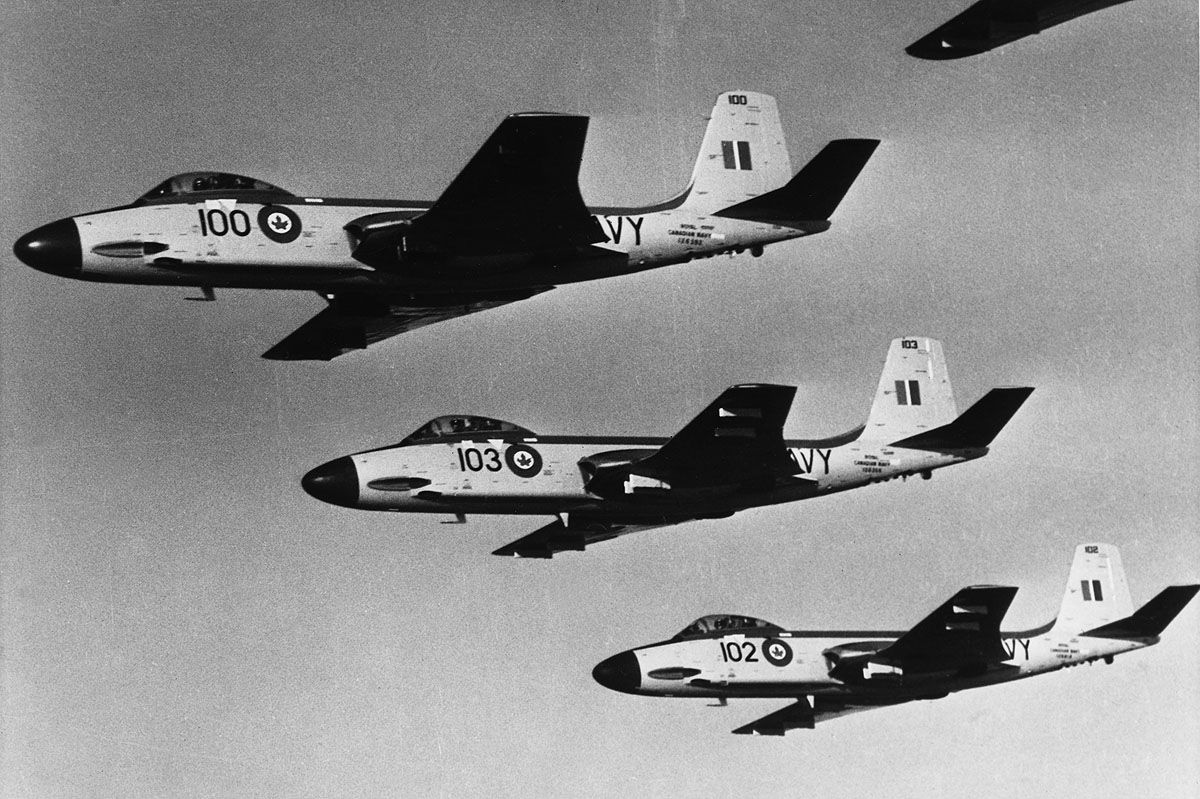
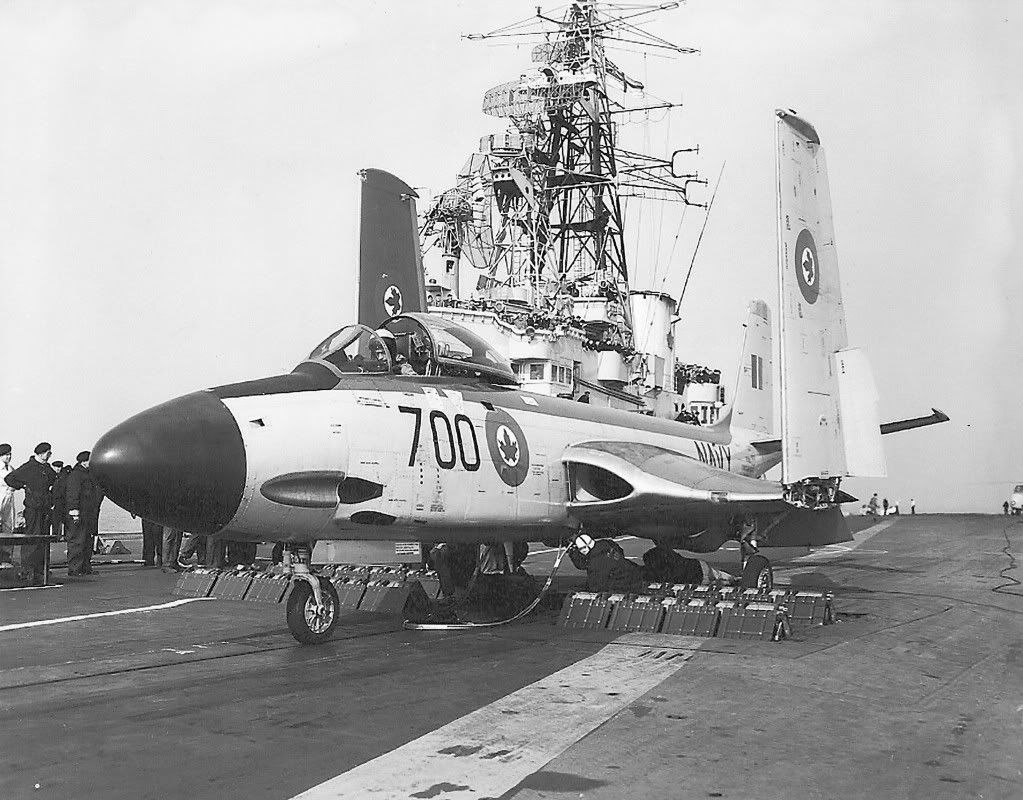
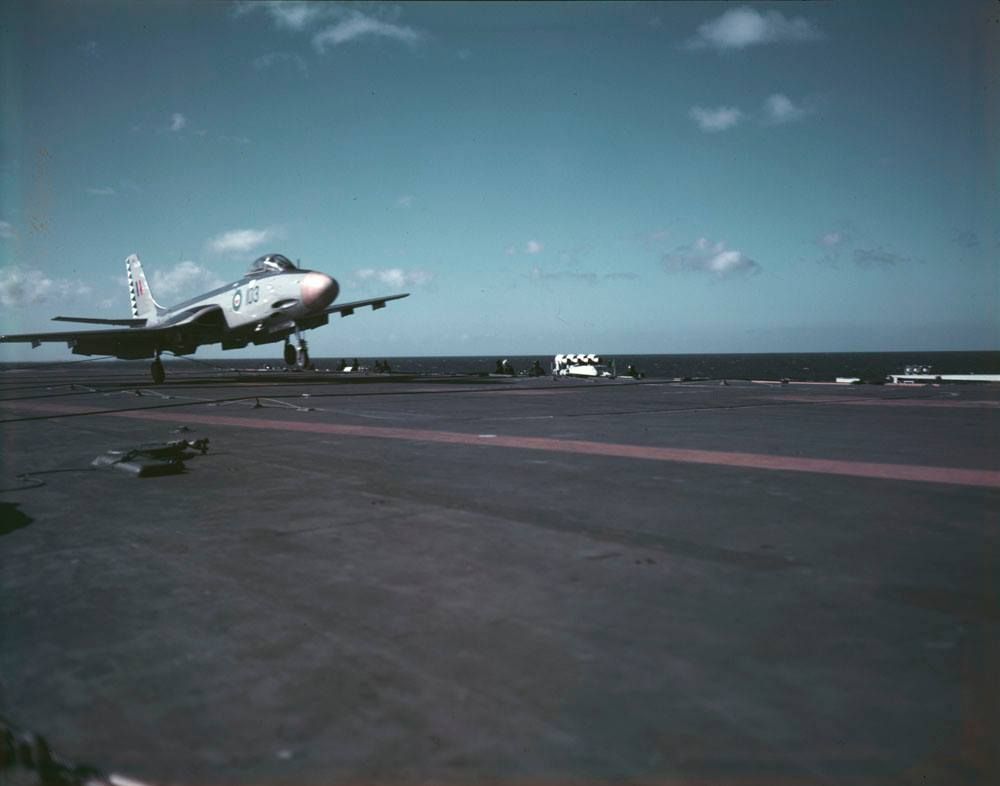

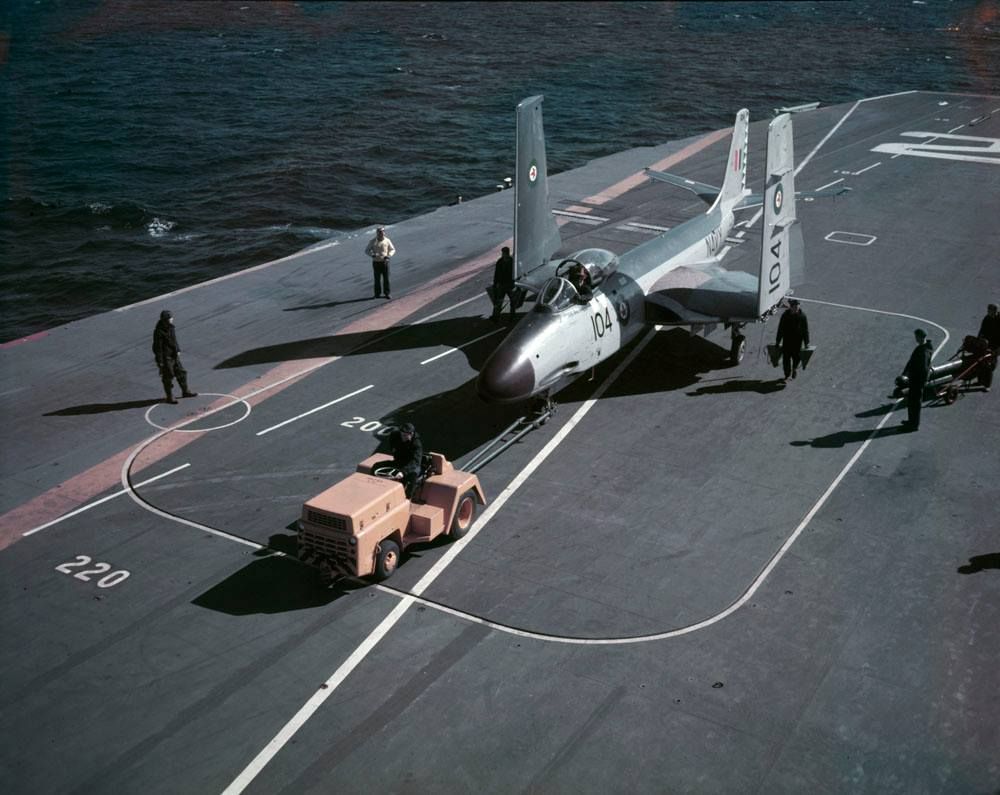
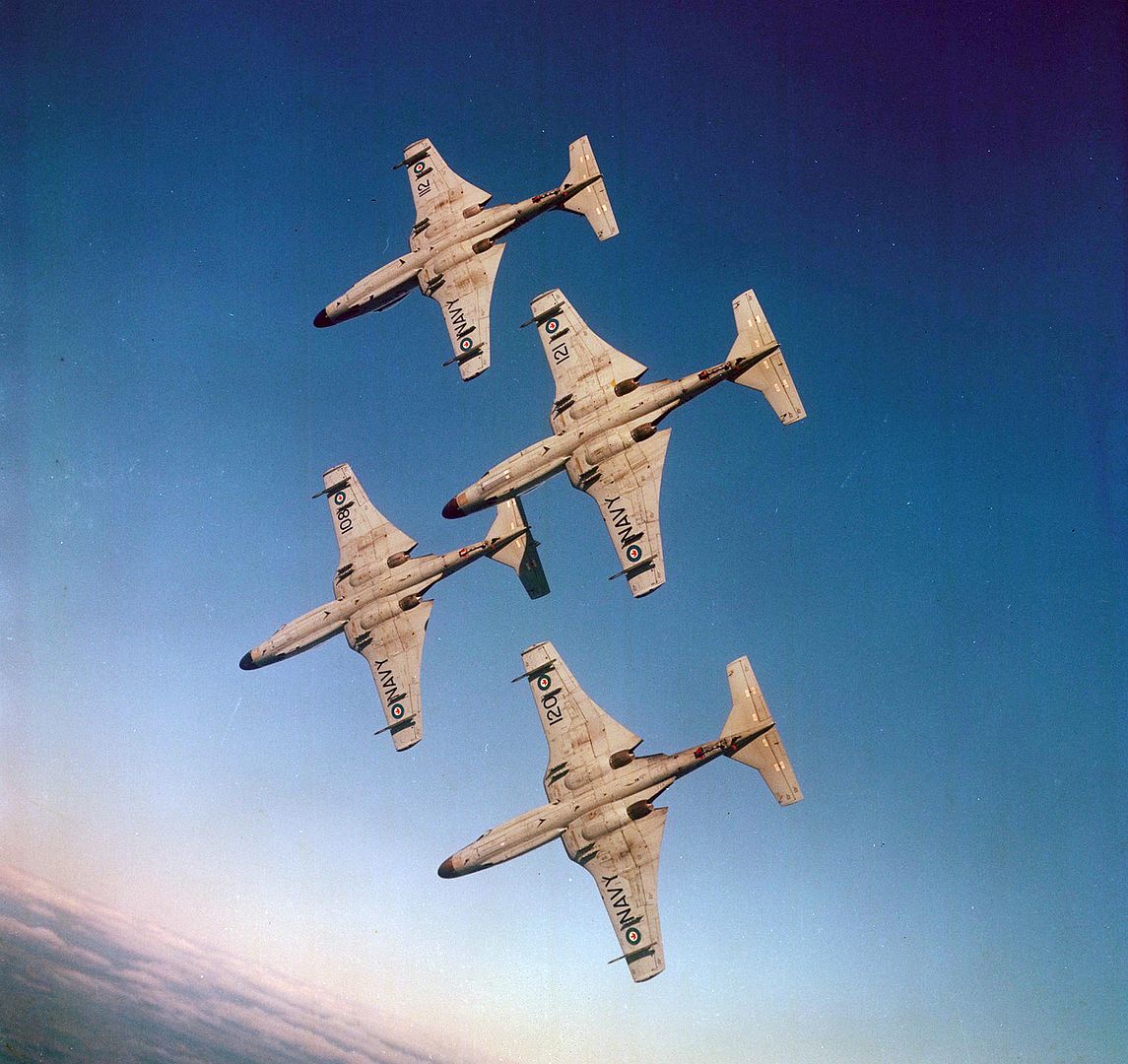
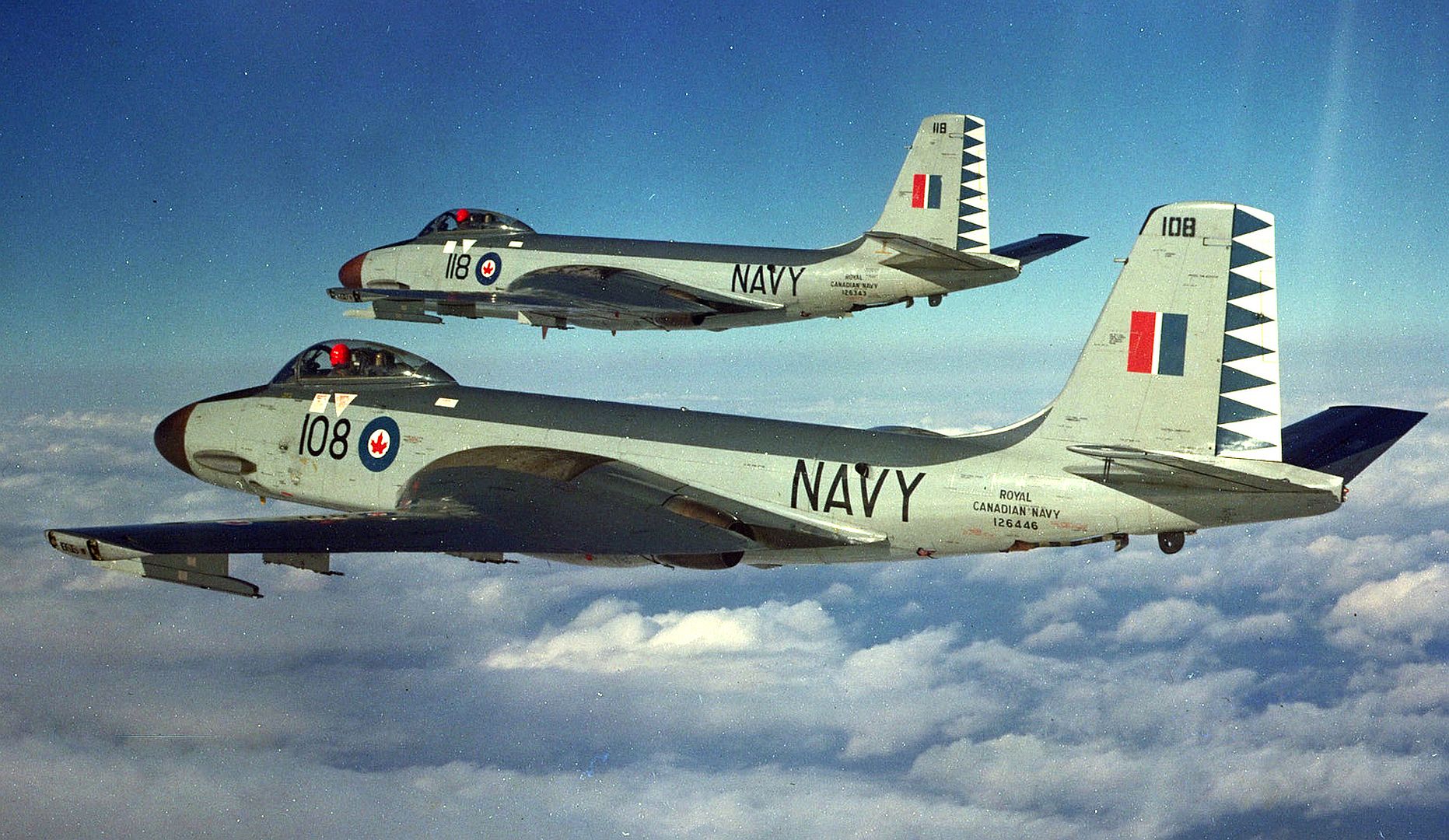

XFD-1 2 Phantom prototypes.
FH-1 60 Production Phantoms.
______________________________________________________________________
XF2D-1 1 Banshee prototype.
F2H-1 56 Initial production Banshee.
F2H-2 364 Banshee with stretch, wingtip tanks, stores.
F2H-2B 27 Fighter-bomber F2H-2 with stronger wings.
F2H-2N 14 Night-fighter F2H-2 with AN/APS-19 radar.
F2H-2P 89 Photo-reconnaissance F2H-2 with 6-camera nose.
F2H-3 250 Further stretched & uprated Banshee, AN/APS-41 radar.
F2H-4 150 F2H-3 with uprated J34 engines, AN/APS-37 radar.
______________________________________________________________________
TOTAL 951 Banshee production including prototype.
General characteristics F2H-3
Crew: one
Length: 48 ft 2 in (14.68 m)
Wingspan: 41 ft 9 in (12.73 m)
Height: 14 ft 6 in (4.42 m)
Wing area: 294 ft? (27.3 m?)
Empty weight: 13,183 lb (5,980 kg)
Loaded weight: 21,013 lb (9,531 kg)
Max. takeoff weight: 25,214 lb (11,437 kg)
Powerplant: 2 ? Westinghouse J34-WE-34 turbojets, 3,250 lbf (14.46 kN) each
Performance
Maximum speed: 580 mph (504 kn, 933 km/h) at sea level
Cruise speed: 461 mph
Range: 1,716 mi (1,492 nmi, 2,760 km)
Service ceiling: 46,600 ft (14,205 m)
Rate of climb: 6,000 ft/min (30 m/s) from sea level
Armament
Guns: 4 ? 20 mm (0.79 in) Colt Mk 16 cannon, 220 rounds/gun (upper pair), 250 rounds/gun (lower pair)[43]
Rockets:
8 ? 60 lb High Explosive rockets or
6 ? 500 lb bombs and 2 ? 60 lb H.E. rockets
Missiles: 2 ? AIM-9 Sidewinder missiles
Text from here - http://www.airvectors.net/avbansh.html#m2
Post a reply
- Go to Previous topic
- Go to Next topic
- Go to Welcome
- Go to Introduce Yourself
- Go to General Discussion
- Go to Screenshots, Images and Videos
- Go to Off topic
- Go to Works in Progress
- Go to Skinning Tips / Tutorials
- Go to Skin Requests
- Go to IJAAF Library
- Go to Luftwaffe Library
- Go to RAF Library
- Go to USAAF / USN Library
- Go to Misc Library
- Go to The Ops Room
- Go to Made in Germany
- Go to Campaigns and Missions
- Go to Works in Progress
- Go to Juri's Air-Raid Shelter
- Go to Campaigns and Missions
- Go to Works in Progress
- Go to Skinpacks
- Go to External Projects Discussion
- Go to Books & Resources
